Director Journal
FRAUDSTERS
How they do it, how they cover it up and how to fight back


How they do it, how they cover it up and how to fight back

Are you ready to take your meeting to the next level?
Blend physical and virtual events and connect with local and international stakeholders
Spectacular, crystal clear audio
Effortlessly integrated Lumi technology

Fully equipped, video ready environments

Calgary . Montreal . Toronto
Contact your local venue and book a meeting today. lumiglobal.com/experience


Editorial
EDITOR
Simon Avery
ART DIRECTOR
Lionel Bebbington
CONTRIBUTORS
Francine Blackburn, Tom Flynn, Gordon Frost, Virginia Galt, Lori Park, Gordon Pitts, Serge Rivest, Barbara Smith, Prasanthi Vasanthakumar, Colin Way, Shirley Won
Prasanthi Vasanthakumar
Rahul Bhardwaj - President and CEO
Richard Piticco - Chief administrative officer
Jan Daly Mollenhauer - Vice-president, sales, marketing and membership
Kathryn Wakefield - Vice-president, chapter relations
Eric Schneider - President
Abi Slone - Creative director
Dana Francoz - Advertising sales dana.francoz@finallycontent.com
416-726-2853
The value of reputation
Rahul Bhardwaj on the need for courageous directors
The walking dead, peeping employers, the purpose of daydreams, investing in biodiversity, and recognizing the trust gap
How to energize your workforce
What have the U.S. bank failures taught boards about handling risk?
Recent board appointments across the country
The world’s best hotel view
Building trust and confidence in Canadian organizations is imperative. At the Institute of Corporate Directors (ICD), we believe that this starts with the right leadership and good governance. Directors must lead by being informed, prepared, ethical, connected, courageous and engaged with the world. In the pages that follow, you will find thoughtful and provocative articles that explore these essential leadership qualities. Bâtir la confiance envers les organisations can- adiennes est primordial. À l’Institut des administrateurs de sociétés (IAS), nous croyons que cela commence par un bon leadership et une bonne gouvernance. Les administrateurs doivent gouverner en étant informés, préparés, intègres, connectés, courageux et ouverts sur le monde. Dans les pages qui suivent, vous trouverez des articles réfléchis et provocateurs qui explorent ces qualités de leadership essentielles.
2701 – 250 Yonge Street, Toronto, Ontario M5B 2L7
T: 416-593-7741 F: 416-593-0636 E: info@icd.ca
ISSN 2371-5634 (Print)
www.icd.ca
ISSN 2371-5650 (Online)
The ICD welcomes a diversity of opinion for inclusion in Director Journal. The contents of this publication do not necessarily reflect the opinions of the ICD, its partners, its sponsors, or its advertisers. Readers are encouraged to consider seeking professional advice and other views. To request reprints of articles, please contact info@icd.ca
Jackie Sheppard’s four decades in the energy sector have taught her that good governance is fundamental for delivering value to investors
How boards can benefit from making a name for themselves
Kickbacks, theft, cooking the books. How to fend off fraudsters
The Vector Institute’s Tony Gaffney talks about balancing innovation with regulation
In Power and Prediction: The Disruptive Economics of Artificial Intelligence, the authors say the full value of AI won’t be felt until we adopt system-wide changes to the way we work
WE’VE TALKED ABOUT the importance of corporate reputation for years, but with some recent high-profile scandals and financial failures in Canada and the United States, there’s a growing emphasis on board reputation too. Directors who speak to institutional shareholders already know how important trust is for raising capital. But more than that, boards that have a solid reputation are more likely to get the benefit of the doubt during a crisis, Prasanthi Vasanthakumar writes in “Why trust is a must” on page 24.
Fraud can rapidly tarnish a board’s reputation and damage the finances of a business. In our cover story, “Fraud busters,” Virginia Galt looks at some of the reasons fraudulent schemes are growing bolder and more prevalent, and how boards and regulators are responding with new standards and tighter controls.
Simon Avery Editor savery@icd.caOur reformatted Directors’ Dilemma column on page 12 focuses on U.S. bank failures. Seasoned directors Francine Blackburn and Tom Flynn emphasize the crucial role of strong governance, including risk management oversight, in maintaining external confidence in an organization.
In our latest ICD Fellow profile, Jackie Sheppard, chair of power utility Emera Inc., describes how good governance should be visible throughout an organization, pervading all corporate activities and decision making. “It is foundational to business decisions, strategy setting, risk assessment and ultimately to a corporation’s culture,” she says.
Lastly, on the matter of reputation, Director Journal has just received nine nominations from the National Magazine Awards: B2B, including for Best Magazine. On top of several awards from earlier years, this is well-deserved recognition for the freelance writers, designers and other contributors who work with me and a small team at the ICD to bring you each issue. We don’t have a large budget compared with some other magazines, and we don’t receive any government financial support. But we do have strong and relevant content – much of it brought to light by ICD members who generously share their ideas and insights. So, thank you. Please keep the channels open and the information flowing, knowing that people are paying attention to what directors have to say. DJ
DEPUIS DES ANNÉES, nous parlons de l’importance de la réputation. Mais depuis l’émergence de récents scandales et échecs financiers d’envergure au Canada et aux États-Unis, la réputation des conseils a aussi gagné en importance. Les administrateurs qui parlent déjà aux actionnaires institutionnels savent déjà l’importance de la confiance pour générer du capital. Bien plus, les conseils qui ont une solide réputation sont plus susceptibles d’obtenir le bénéfice du doute durant une crise, écrit Prasanthi Vasanthakumar dans son article « Pourquoi la confiance est indispensable » en page 24.
La fraude peut rapidement ternir la réputation d’un conseil et mettre à mal les finances d’une entreprise. Dans notre article principal, « Chasseurs de fraudes », Virginia Galt examine certaines raisons pour lesquelles les complots frauduleux sont de plus en plus audacieux et répandus et comment conseils et autorités réglementaires y répondent avec de nouvelles normes et des contrôles plus serrés.
Notre chronique remaniée Dilemme des administrateurs en page 12 porte sur les faillites de banques américaines. Les administrateurs chevronnés Francine Blackburn et Tom Flynn évoquent le rôle crucial d’une solide gouvernance pour maintenir la confiance dans une organisation.

Dans notre dernière présentation de nos Fellows, Jackie Sheppard, présidente du conseil d’Emera Inc., explique comment la bonne gouvernance devrait être visible partout dans une organisation et imprégner toutes ses activités et décision.
Enfin, question de réputation, le Director Journal a obtenu neuf nominations dans le cadre des National Magazine Awards, dont celle de meilleur magazine. S‘ajoutant à de nombreux prix reçus au fil des ans, il s’agit d’une reconnaissance pour nos pigistes, concepteurs et autres collaborateurs pigistes qui travaillent avec moi et ma petite équipe de l’IAS pour vous proposer chaque numéro. Donc, merci à chacun et chacune d’entre vous. Maintenons les canaux de l’information, lesquels sont ouverts par des membres de l’IAS qui partagent généreusement leurs idées et points de vue et portent attention aux opinions des administrateurs. DJ
GRADUATES OF THE Institute of Corporate Directors’ education programs understand the importance of boards applying “hindsight, oversight and foresight” in their roles. In today’s highly competitive and uncertain world, the oversight role has grown, with directors obliged to keep close tabs on strategy, culture and risk at their organization – a subject the ICD has explored with the TMX Group in our Charting the Future report released late last year.
The deployment of generative AI technology in recent months offers one of the greatest examples of opportunity and risk before us today. But for any modern business, success depends on doing more than just implementing change. Directors and their management teams must have the courage and confidence to innovate and to apply non-traditional thinking to tackle challenges, capture new ideas and deliver effective solutions.
Rahul Bhardwaj LL.B, ICD.D President and CEO, The Institute of Corporate DirectorsSuch courageous and innovative directors create “breakthrough boardrooms,” a phenomenon we are focusing on at our national conference in Montreal. From June 13 to 15, we are bringing together the best in governance thought leadership to discuss how boards can embrace challenge and change so that their organizations can compete and thrive effectively and responsibly in a rapidly evolving world.
Society today has rising expectations of businesses and of directors themselves. Thankfully, we have a strong community of directors in Canada, which through the ICD has the opportunity to discuss important issues. Our national conference will bring together the largest group of members in person since 2019 – a community that I am pleased to report has grown steadily throughout the pandemic.
I look forward to meeting as many members at the conference as possible, where we will gather to celebrate the 20th anniversary of our Quebec chapter, as well as recognize our four newest Fellows at the Fellowship awards gala – John Bowey, Jacynthe Côté, Jackie Sheppard and Benita Warmbold. If you haven’t already done so, please take a moment to review the conference agenda on our website and consider a visit to Montreal. DJ
LES DIPLÔMÉS DES programmes de formation de l’institut des administrateurs de sociétés comprennent l’importance pour les conseils d’appliquer dans leurs fonctions la maxime : rétrospective, surveillance, perspective. Dans l’univers hautement compétitif et incertain qu’est le nôtre, le rôle de surveillance s’est accru, alors que les administrateurs doivent suivre de près la stratégie, la culture et les risques présents dans leurs organisations – un sujet que l’IAS et le Groupe TMX ont abordé dans leur rapport sur la gouvernance d’entreprises au Canada.
Le déploiement récent de technologies génératives d’intelligence artificielle offre l’un des meilleurs exemples des risques et opportunités qui se présentent. Mais pour toute entreprise moderne, le succès se résume à plus que mettre en œuvre le changement. Les administrateurs et leurs équipes de direction doivent avoir le courage et la confiance nécessaires pour appliquer une pensée non traditionnelle à leurs activités, capter de nouvelles idées et livrer des solutions efficaces. Ces administrateurs courageux et innovateurs créent ainsi des « salles du conseil à l’avant-garde », un phénomène qui attirera notre attention lors de notre congrès national qui aura lieu à Montréal du 13 au 15 juin. Nous réunirons alors le meilleur de la gouvernance pour discuter comment les conseils peuvent embrasser les défis du changement et se développer de façon efficace et responsable dans un monde en évolution rapide.
Les exigences de la société envers les entreprises et les administrateurs eux-mêmes sont immenses. Nous avons la chance de compter au Canada sur une solide communauté d’administrateurs qui, grâce à l’IAS, ont la chance de discuter d‘enjeux importants.
Il me tarde de rencontrer autant de membres que possible lors de notre congrès, qui accueillera le plus grand nombre de membres en personne depuis 2019. Nous célébrerons alors le 20e anniversaire de notre section québécoise et accueillerons nos nouveaux Fellows, soit John Bowey, Jacynthe Côté, Jackie Sheppard and Benita Warmbold. D’ici là, familiarisez-vous avec le programme de l’événement sur notre site Web. DJ
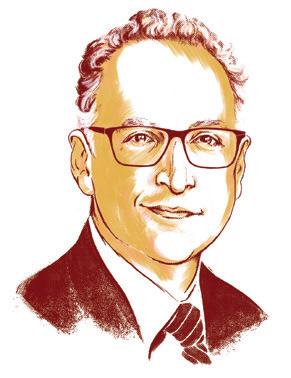
Up to 36 per cent of publicly traded companies in Canada could be zombies, Statistics Canada estimates.
THE WALKING DEAD may be science fiction, but Canada is grappling with some real-life zombies. Statistics Canada reports that “zombie firms” – unprofitable companies that survive off cheap debt and the support of banks and governments – are proliferating in this country.

These zombies eat up 8.3 per cent of Canada’s capital and provide 5.3 per cent of the country’s jobs. However, they stumble along without generating enough money to reinvest in their
businesses and typically pay lower wages. Economists warn that zombie firms bleed the economy dry by taking away resources such as bank loans from healthy companies.
According to Statistics Canada, up to 36 per cent of listed companies in Canada could be all but dead. Low-interest debt and pandemic funds may have kept these zombies above ground, but a looming recession could prove to be the final nail in their coffin.
RESUMEBUILDER.COM finds that 96 per cent of remote or hybrid employers are spying on staff, with more than one-third monitoring employees on a live video feed. But Big Brother isn’t being welcomed by everyone: 70 per cent of employers report that some workers have quit over the practice.
The boss’s feeling that workers aren’t really working at home is fuelling this scrutiny, Jane Thier reports in Fortune. Indeed, 97 per cent of employers think monitoring software has raised worker productivity.
But productivity paranoia may be counterproductive. Data from Qatalag and GitLab shows knowledge workers waste an average 67 minutes online on menial tasks just to prove they are working.
Company mistrust also erodes staff loyalty and effort. A study by Arizona State University management professor David Welsh found that monitored employees were more likely to take extra breaks and work more slowly. Surveillance can diminish a worker’s sense of personal responsibility and make them feel controlled, Welsh told the BBC.
Spying on people at work is not the answer for Microsoft’s Jared Spataro, either. “Measuring productivity with mouse movements is like using a sundial as a stopwatch,” the company’s corporate vice-president of modern work writes in Fortune.
Instead, Spataro urges leaders to look at value over volume and outcomes over activity. And if leaders look at data from multiple studies, they would find that hybrid workers are the most productive and engaged.
Here’s how companies watch their workers.
Daydreaming is often frowned upon, but it can give us our best ideas. In their new book Tomorrowmind, Gabriella Rosen Kellerman and Martin Seligman say wandering minds activate parts of the brain essential for creativity and innovation. In this mode, our minds break the bonds of space and time, and merge memory and fantasy.
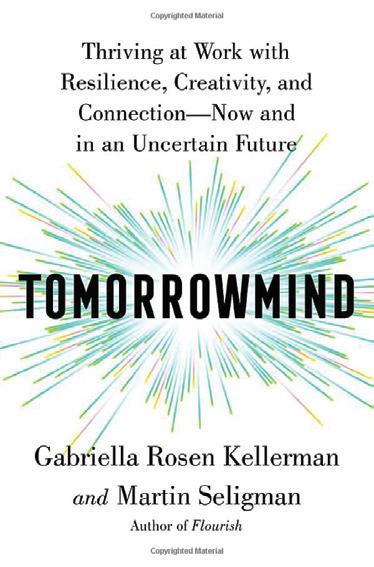
According to these psychology experts, our attention constantly flits between the task at hand and daydreams. Task-focused thinking – or the much-lauded act of “paying attention” – is efficient and uses information about the world as we know it. But when our minds drift, we imagine unrealistic scenes. This fantastic imagery allows us to discover new things.
But who has time for such fancy? Despite society’s obsession with efficiency and productivity, stifling our daydreams is a bad idea. “Daydreaming is a feature of the mind, not a bug,” the authors write.
Climate change remains top of mind for Canadian institutional investors, but interest in biodiversity is blooming. A study on ESG sentiment finds nearly 50 per cent of investors cited biodiversity as a top three ESG focus area – up from just 16 per cent six months before.

The UN’s COP15 biodiversity conference in Montreal sparked interest in the topic. Held in late 2022, these meetings formalized a global biodiversity framework with goals and targets to reach by 2030. Now investors are figuring out how to assess biodiversity in their investment process.
Percentage of investors who placed biodiversity in their top three ESG focus areas.
December 2021
June 2022
December 2022
18% 16% 48%
Source: Semi-Annual ESG Sentiment Study of Canadian Institutional Investors, Millani


WITH HIGH INFLATION, mass layoffs and news of extraordinary CEO pay packages, trust in companies is tanking. In a survey of business executives, consumers and employees earlier this year, audit and consulting firm Pricewaterhouse Coopers (PwC) found a large gap in how people think about trust.
Executives define trustdamaging events as large-scale, headline-grabbing news about security, legal, compliance and financial incidents. But for customers and employees, it’s more personal. Poor customer service and a lack of transparency can break consumer trust, whereas bias and mistreatment can erode employees’ trust in the firm. More than half of affected customers and workers walked away from a company for these reasons.
To build trust, bosses need to understand what matters to employees and customers.
BROKEN TRUST
People have different definitions of a trust-damaging event – which may be why only 20 per cent of executives think their organizations have broken trust in some way.
Feeling blue about Twitter? Fortunately, the social media landscape is littered with contenders vying for your attention – and Substack is the latest to enter the fray. The publishing platform’s new “Notes” feature looks a lot like Twitter and allows users to share and reshare posts and images. It also keeps track of “likes” and comments.
50% consumers
20% executives
54% employees
Percentage of people who have experienced a trust-damaging event.
Source: PwC 2023 Trust Survey
There is one main difference. Like its parent network, Notes makes money through user subscriptions instead of advertisements. Its goal is to convert casual readers into paying subscribers, with most of the money going to the content creators.
Elon Musk is trying to cash in on subscribers, too. But his new pay-to-play approach to Twitter verification checkmarks appears to have flopped, with major media outlets and celebrities announcing the blue tick isn’t worth it.
Insider Intelligence, a digital research firm, expects Twitter will lose more than 30 million users by 2024. Substack’s Notes might win them over.
MONTREAL I JUNE 13-15, 2023 I ONLINE I JUNE 14, 2023
Join the ICD at the Fellowship Awards Gala in Montreal, to celebrate excellence in corporate governance. The Gala will honour the 2023 Fellows, selected for their exemplary board governance leadership.
JOHN H. BOWEY
MBA, FCA, FCPA, ICD.D Chair, Definity Financial Corporation; Director, Definity Insurance Foundation, Waterloo Brewing Ltd., Kognitiv Corporation
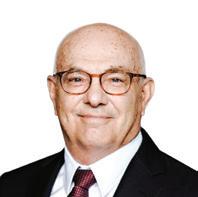
JACKIE SHEPPARD
MA, LL.B, LL.D, QC Chair, Emera Inc.; Director, Suncor Energy, Arc Resources Ltd.


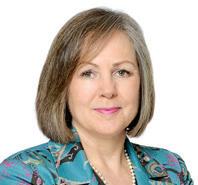
JACYNTHE CÔTÉ
ICD.D
Chair, Royal Bank of Canada, Alloprof; Director, Transcontinental Inc., Finning International Inc.
BENITA M. WARMBOLD
FCPA, FCA, ICD.D
Chair, Canadian Public Accountability Board (CPAB); Director, Scotiabank, Methanex, SNC-Lavalin
Bonuses and benefits are nice, but employees these days crave a better experience too, say employment specialists
MOST EMPLOYEES say the pandemic has driven them to rethink their priorities. What worked before to create and support an engaged workforce likely no longer meets employees’ expectations. In a time of transformative change, focusing on a strong employee experience is crucial to finding and keeping top talent.
There is an unnerving symmetry in some of our most recent survey findings. According to our Global Talent Trends 2022-2023 study, 81 per cent of C-Suite respondents report that the business agenda and the people agenda have never been more intertwined. At the same time, an identical percentage of employees report feeling at risk of burnout.
So, how do you successfully energize and support your workforce to create the environment necessary for individual and business success? We believe it’s possible by focusing on your employee experience, embracing concepts like purpose, learning and flexibility.
We’ve seen a shift in what employees say makes them want to join or stay with a company. Historically, the keys were higher compensation or more benefits. Today, it’s increasingly a sense of alignment with the organization’s purpose, an opportunity to grow professionally, and flexibility to meet their unique personal and family needs. Notably, more than half of employees (54 per cent) say they will only join a company if they can work remotely or have a hybrid work schedule. Our research also shows that the “experience” at work — things such as opportunities for learning or career development, meaningful work, and a sense of belonging — has the biggest effect on employee commitment.
We know that not every role can flex in the same way, but there are generally opportunities in every position. For instance, roles that require a physical presence might allow for flexibility in schedule, or the possibility for job sharing. Employers need to find those opportunities, while also supporting flexible work with the right tools and processes, including those that prevent bias from affecting decisions about pay and performance.
Improving the employee experience also means finding solutions for the more mundane parts of employees’ working lives. If you can ease burdensome tasks that add stress and anxiety, you make room for your employees to do better work.

If employees feel they belong and are cared for, they will respond in kind with “discretionary effort” — a willingness to go the extra mile and exceed expectations. This is a moment of profound opportunity: to carve a new way for resilient, sustainable organizations attuned to the new shape of work. DJ
LORI PARK is a partner and Atlantic Canada market leader at professional services firm Mercer Canada. She works with employers, boards and others on employment issues in the public and private sectors. Previously, she practised labour and employment law. GORDON FROST is a partner at Mercer Canada and the firm’s office leader in Ottawa, where he works with governments, Crown corporations, universities and other public sector organizations. He serves on the board of Project Terra Firma of Canada.
Features such as a hybrid work schedule, learning opportunities and a sense of belonging have become bigger motivators of staff than cash bonuses, employment experts say.
Q.The high-profile bank failures in the United States underscore the importance of risk oversight. We asked two directors: When it comes to risk, what are some of your lessons learned as a board director? And what is your key takeaway for directors from the Silicon Valley Bank crisis about governance today?
4. Avoid “picking up pennies in front of steamrollers.” This refers to situations where a small amount of incremental income is earned in a transaction or arrangement that brings with it the potential for significant downside. Companies can fall into this trap for a variety of reasons, including pressure to hit earnings expectations, a reluctance to make needed investments, and overengineering for efficiency, for example with supply chains or IT systems. Keep a look out for activities that seem overly short-term oriented or aren’t sufficiently resilient.
RECENT HIGH-PROFILE bank failures were largely caused by idiosyncratic factors related to risk management failures and business model challenges, and serve as a valuable reminder of the importance of risk management oversight fundamentals. Here are five lessons for board members to consider:
1. Always assess and debate stress tests in the context of the organization’s risk appetite. Stress tests provide information about how much risk a firm has, or proposes to take, under different scenarios, while risk appetite defines how much risk a firm is willing to accept. Analyzing the two together is particularly important when dealing with concentrated risks, key emerging risks, and tail (low-probability, high-severity) risk.
2. Be sure to consider risk signals from your firm’s industry and broader environment, as well as external points of view. For example, understand risks and opportunities related to significant deviations from industry benchmarks. Discuss how changes in the environment affect risk-return propositions. And leverage the views of equity and debt markets, rating agencies, regulators and employees to get the benefit of other perspectives.
3. Confirm that management is ready to effectively respond to a crisis in today’s hyperconnected world. Playbooks, clear roles and responsibilities, and lessons from crisis management simulations are invaluable, given the speed and intensity with which crises can manifest and accelerate. Boards should understand management’s crisis policies and strategies to assess whether they are fit for purpose.
5. Take time for quality, thoughtful discussion. Effective risk management and risk oversight is not easy. It takes unstructured discussion to think through vulnerabilities and potential effects, and to assess risk-return tradeoffs in the context of risk appetite. Board and committee chairs play a key role in ensuring agendas provide time for good quality dialogue.
TOM FLYNN, ICD.D, serves on the board of Telus Corp. and is a member of its pension and audit committees. He is chair of the board of Sunnybrook Health Sciences Centre and previously served as the chief financial officer and chief risk officer of Bank of Montreal.

LES RÉCENTES FAILLITES bancaires qui ont retenu l’attention ont été largement causées par des facteurs idiosyncratiques reliés à des échecs de gestion du risque et représentent un rappel précieux de l’importance de bien comprendre les éléments fondamentaux de la gestion du risque.
1. Évaluez constamment le contexte d’appétit du risque de l’organisation. À cet égard, les tests de simulation fournissent de l’information détaillée sur les risques que l’entreprise doit affronter ou proposent ceux qu’elle pourrait accepter de prendre, selon différents scénarios. L’analyse des deux éléments est particulièrement important lorsqu’il s’agit de risques concentrés (là où le risque est réparti sur trop peu de secteurs), de risques clés en émergence et de risques de pertes extrêmes, lorsqu’un actif est loin de donner sa mesure habituelle.
2. Assurez-vous d’envisager les signaux de risque provenant de votre industrie et de son environnement global, en plus de certains points
de vue externes. Par exemple, comprenez les risques et opportunités reliés à des déviations importantes des normes de l’industrie. Discutez de la manière dont les changements dans l’environnement affectent les propositions de risque-rendement. Et profitez des perspectives des marchés des actions et de la dette, des agences de notation, des autorités réglementaires et des employés pour obtenir l’avantage d’autres points de vue.
3. Confirmez que la direction est prête à répondre efficacement à une crise dans le monde interconnecté qui est le nôtre. Les modèles, la définition des rôles et responsabilités et les leçons retenues de la gestion de crise sont précieux, compte tenu de la vitesse et de l’intensité auxquelles les crises peuvent se manifester et s’accélérer.
4. Il faut éviter d’investir pour des gains modestes suivis d’une faible probabilité de pertes importantes. Les entreprises peuvent tomber dans ce piège pour de multiples raisons, dont des pressions qui

s’exercent pour atteindre certains objectifs, une réticence à procéder à des investissements nécessaires et la création de chaînes logistiques exagérément compliquées à des fins d’efficacité. Attention aux activités qui paraissent manifestement orientée vers le court terme ou ne sont pas suffisamment solides.
5. Prenez le temps d’avoir des discussions de qualité. La gestion et la surveillance efficace du risque par la direction n’est pas une chose facile. Il y faut des discussions libres pour évaluer les vulnérabilités et les effets potentiels, évaluer les risques et le retour d’un échange dans un contexte d’appétit du risque. Le conseil et les présidences de comités jouent un rôle de première importance en s’assurant que leurs ordres du jour offrent le temps nécessaire pour un dialogue de qualité.
TOM FLYNN, IAS.S, est membre des comités de pension et d’audit de Telus Corp. et président du conseil d’administration du Sunnybrook Health Sciences Centre.
THE RECENT BANK FAILURES in the United States are a clear reminder that effective corporate governance practices play an important role in maintaining the confidence of depositors as well as overall market confidence. While it may be a little early to know exactly what went wrong at these banks, there are a few takeaways for directors.
First, the board’s responsibility for the approval and oversight of business plans, strategies and risk management cannot be overstated. This includes establishing a well-defined risk-appetite framework, and having policies and practices related to the management of all risks. Banks are in the business of taking risks, but directors should understand what risks are being taken and how they are being managed and mitigated under certain market conditions and stressed scenarios.
Directors also need to know how credit and market risks affect the company, and they should ensure effective liquidity and capital management practices are in place, to avoid the following scenarios:
• A lack of industry or geographic diversification in the bank’s credit portfolio could prove problematic if market conditions deteriorate. Similarly, failure to understand the impact of interest rate risks between assets and liabilities can also be damaging for the organization.
• Banks are highly leveraged and can have large mismatches between the terms of their assets and liabilities, resulting in material funding or investment risks. This can make them more vulnerable to unexpected adverse events. It is critical to have adequate diversification of the funding base in terms of source and term structure. Directors also need to ensure there are well articulated liquidity contingency plans in place and that management is prepared to execute such plans.
Second, key oversight functions must be staffed with competent individuals who are independent of management and have sufficient stature within the organization, whether it be the chief risk officer, the chief audit executive, or the head of regulatory compliance. Such positions cannot be left vacant.
Third, directors need to understand the issues raised by regulators and ensure they are addressed effectively and on a timely basis. Management assurances should always be followed up with independent validation.
Most of these best practices apply to other sectors beyond just finance. In all instances, the board must make sure that management understands the risks the organization is facing, ensure effective oversight functions are in place, and confirm that the business has adequate capital and liquidity to manage through tough times.
FRANCINE BLACKBURN, ICD.D, serves on the board of Home Equity Bank, where she chairs the audit committee and is a member of the conduct review and risk management committee. She is also the chair of the audit committee and a member of the risk committee at Aviva Canada Inc.

LES RÉCENTES FAILLITES bancaires aux États-Unis rappellent clairement que les pratiques de gouvernance efficaces jouent un rôle important dans le maintien de la confiance des déposants et celle de l’ensemble du marché. Même s’il paraît encore un peu tôt pour savoir exactement ce qui s’est passé, il existe quand même quelques leçons à tirer pour les administrateurs.
D’abord, la responsabilité du conseil dans l’approbation et la surveillance des plans d’affaires, des stratégies et de la gestion du risque n’est pas à démontrer. Cela comprend l’établissement d’un cadre bien défini d’appétit pour le risque et la mise en place de politiques et de pratiques reliées à la gestion de tous les risques. Les banques évoluent dans une activité de prise de risque, mais les administrateurs devraient comprendre quels sont les risques qui sont pris et comment ils sont gérés et modérés selon certaines conditions de marché et en vertu de scénarios précis.
Les administrateurs doivent savoir comment les risques de crédit et de marché affectent l’entreprise et devraient s’assurer que des pratiques de gestion des liquidités et du capital efficaces soient en place.
• Un manque de diversification industrielle ou géographique dans le portefeuille de crédit de la banque pourrait s’avérer problématique si les conditions de marché se détériorent. De la même façon, l’incapacité de comprendre l’impact des risques de taux d’intérêts entre actifs et passifs peut faire beaucoup de tort à l’organisation.
• Les banques sont fortement adossées à des actifs et peuvent compter d’énormes écarts entre actifs et passifs. Cela peut les rendre plus vulnérables à des événements indésirables et imprévus. Il est essentiel d’avoir une diversification adéquate de la base de financement aussi bien en matière de source que de structure.
Deuxièmement, les principaux postes de surveillance doivent être dotés de personnes compétentes qui sont indépendantes de la direction et possèdent une envergure suffisante au sein de l’organisation, qu’il s’agisse du chef de la gestion des risques, du responsable de la vérification ou du chef de la conformité réglementaire. Ces postes ne peuvent pas demeurer vacants.
Les administrateurs doivent enfin comprendre les enjeux soulevés par les autorités réglementaires et s’assurer de leur donner un suivi efficace et régulier. DJ
FRANCINE BLACKBURN, IAS.A, siège au conseil de HomeEquity Bank, où elle préside le comité d’audit et est membre du comité de gestion et d’analyse du risque. Elle est aussi présidente du comité d’audit et membre du comité de risque d’Aviva Canada Inc.
The ICD-Rotman Directors Education Program is the leading educational program for experienced board directors seeking to advance their contributions to Canada’s boardrooms and beyond.
A joint initiative of ICD and Rotman, this comprehensive program offers both a national and local perspective, through leading business schools across Canada. With the goal of building competencies deemed necessary to be an effective director in today’s challenging world, the DEP provides insight from both an academic and real-world, director lens perspective. Course participants benefit from the rich experience of their peers in navigating their role within complex board dynamics. Completion of the DEP and success in the ICD led examination process, leads to the highly recognized ICD.D designation, within a one-year timeframe.
Interested experienced directors are encouraged to submit their application to the ICD, along with references, for consideration into the program. A limited number of scholarships for qualified applicants, are available for upcoming DEP offerings. Visit ICD.CA/DIVERSITYSCHOLARSHIP for more information.
For a personal consultation call 416.593.3325 or email education@icd.ca.
Think beyond the boardroom.

UPCOMING DEP START DATES
EDMONTON September 21, 2023
TORONTO October 2, 2023
WINNIPEG October 12, 2023
ONLINE October 16, 2023
CALGARY October 26, 2023
HALIFAX November 16, 2023
MONTREAL April 19, 2024
The DEP consists of 4 modules. Modules will be in person according to local health and safety guidelines.
The application process is now open and is subject to availability. Application deadlines are 4-6 weeks before the class start date.
Jackie Sheppard has little time for those who would put a corporation’s values – its purpose – and its pursuit of value in separate boxes.

ICD Fellow JACKIE SHEPPARD was drawn to Calgary 42 years ago by dynamic opportunities in the energy sector. As she pursued a path from law to executive management, she never lost sight of the principles and discipline that strong governance brings to a business, Gordon Pitts writes
La Fellow de l’IAS Jackie Sheppard a été attirée vers Calgary il y a 42 ans par les opportunités dynamiques qui s’y présentaient dans le secteur de l’énergie. Alors que sa route la menait du droit à la gestion exécutive, elle n’a jamais perdu de vue les principes et la discipline qu’une solide performance apporte à une entreprise, explique Gordon Pitts
WHEN JACKIE SHEPPARD discusses the modern corporation – its form and function – there is a moment when she sounds like an art connoisseur approaching a masterpiece.
She steps back to admire the beauty of the concept: The limited-liability corporation’s ability to tap public capital markets, to pool money and talent to do greater things than individuals could achieve on their own. Then, there is the essential capacity to return value back to the investors who supply the capital.
“The notion of a capital-markets corporation is fantastic – a brilliant concept,” says Sheppard, a lawyer, former energy executive, and now a prominent director.
But to ensure this ideal plays out in the real world, and to maintain healthy public markets, the vital piece is good governance, which provides the framework for corporations to deliver value to investors.
In her mind, good governance means, among other things, transparency and discipline in decision making, an assurance that risk is
LORSQU’ELLE DISCUTE de l’entreprise moderne – sa forme et sa fonction – il y a un moment où on croit entendre un esthète en face d’un chef-d’œuvre.
Elle recule pour admirer la beauté du concept : la capacité d’une société à responsabilité limitée d’exploiter les marchés publics de capitaux. De réunir l’argent et le talent pour accomplir davantage ce que les personnes peuvent réaliser seules. Puis, il y a cette capacité essentielle de retourner de la valeur aux investisseurs qui ont fourni le capital.
« La notion de sociétés de marchés financiers est fantastique; c’est un concept brillant », affirme Mme Sheppard, avocate, ex-dirigeante dans le secteur de l’énergie et aujourd’hui administratrice de première importance.
Mais pour s’assurer que cet idéal fonctionne dans la réalité – et pour maintenir des marchés publics sains – la bonne gouvernance est un élément essentiel qui fournit aux entreprises le cadre nécessaire pour offrir de la valeur aux investisseurs.
part of the calculation, and an accountability culture that delivers results up and down and across the organization.
This is not some abstract theorist musing over the meaning of market capitalism. Sheppard is a veteran of the front lines of the energy industry, who over four decades has moved from an oil and gas practice with a top Calgary law firm, to a senior executive role in a global energy company, to a busy boardroom career – and to her induction this year as a Fellow of the Institute of Corporate Directors.
Throughout her career, Sheppard has been studying governance and its broader economic and social role. For her, it is not some esoteric concept, nor a formulaic recitation of rules to be checked off in the boardroom or the C-Suite, but a holistic set of principles and disciplines to permeate the organization. Indeed, Sheppard has little time for those who would put a corporation’s values – its purpose – and its pursuit of value in separate boxes.
“People say you should stay out of values, but for me, having the correct values delivers value,” she says. “They say you can get too tied up in good governance or details about governance, but there is no alternative.”
She brings the conversation to the board’s basic obligation to shareholders. “I think of my shareholders as pensioners, as people who need income.
“We have the benefit of their dollars to help us do things, including creating great jobs and opportunities. This is a responsibility – it is not just a club, you don’t just show up. And if it doesn’t work, you have to do something about it.”
For her, strong governance must extend beyond the critical interplay of board and management to pervade all corporate activities and decision making. “When looked at this way, it is foundational to business decisions, strategy setting, risk assessment and ultimately to a corporation’s culture.”
Andrea Rosen, Sheppard’s fellow director at Halifax-based power utility Emera Inc. and a board member of the Institute of Corporate Directors, says a board’s understanding of the corporate culture is important but often difficult to achieve. “The nature of governance is dealing with the upper strata of management, but how do you peel the layers back to see what is permeating the organization? It’s a soft skill but it does require a lot of attention.”
The board has to figure out how to see below that upper layer or two without being disruptive, she says.
Another of Sheppard’s Emera board colleagues, former telecom executive Karen Sheriff, agrees that governance “is not something you just lay on top.” For her, “it is part and parcel of the way you work, not just as a board but for an entire organization. It is a rigour you put in place at every level of every organization to make sure you hit your objectives.”
Management often doesn’t think about the formal word “governance” but, in fact, “that is what we do,” Sheriff says. It means setting objectives, trying to install great leaders, and “then you have procedures to make sure objectives are hit and problems are mediated.” From there, a whole set of actions unfold – checklists,
Selon elle, toutefois, la bonne gouvernance entraîne notamment la transparence et la discipline dans la prise de décision, l'assurance que le risque fait partie du calcul, et une culture de la responsabilité qui donne des résultats de haut en bas dans toute l'organisation.
Il ne s'agit plus de théoriser abstraitement sur le capitalisme de marché. Leader d’affaires chevronnée, Mme Sheppard est passée d'une pratique pétrolière et gazière au sein d'un cabinet d'avocats de premier plan à Calgary à un poste de cadre supérieur dans une entreprise mondiale du secteur de l'énergie et d’une carrière bien remplie au sein de conseils d'administration à son intronisation cette année en tant que Fellow de l'Institut des administrateurs de sociétés.
Tout au long de sa carrière, Mme Sheppard s’est penchée sur la gouvernance et ses enjeux économiques et sociaux. Pour elle, il ne s’agit pas de quelque concept ésotérique ou d’une récitation de règles fondées sur des formules, mais d’un ensemble complet de principes et de disciplines à intégrer dans la gestion de l’organisation. Bien sûr, elle a peu de temps à consacrer à ceux qui voudraient placer les valeurs d’une entreprise – son objectif – dans des cases spécifiques ou dans les détails relatifs â la gouvernance.
« Les gens disent qu’on devrait demeurer hors des valeurs, mais je pense que les bonnes valeurs retournent de la valeur, dit-elle. On dit qu’on peut devenir trop empêtré dans la bonne gouvernance ou dans les détails relatifs à la gouvernance. Mais il n’y a pas d’alternative. »
Elle amène la conversation vers l’obligation de base faite aux actionnaires : « Je conçois mes actionnaires comme des retraités qui ont besoin de revenus. »
« Leurs dollars nous aident à réaliser des choses, dont créer d’excellents emplois et opportunités. Il s’agit là d’une responsabilité. Ce n’est pas seulement un club, il ne s’agit pas seulement de se présenter. Et si ça ne marche pas, vous devez faire quelque chose. »
Selon elle, une forte gouvernance doit se prolonger au-delà de l’interaction cruciale entre le conseil et la direction qui imprègne toutes les activités de l’entreprise et la prise de décision. « Quand on regarde les choses ainsi, cela devient essentiel aux décisions d’affaires, à l’établissement de la stratégie, à l’évaluation du risque et ultimement à la culture de l’entreprise. »
Andrea Rosen, collègue administratrice de Mme Sheppard du service d’électricité Emera et membre du conseil de l’Institut des administrateurs de sociétés, soutient que la compréhension d’un conseil à l’égard de la culture d’entreprise est importante, mais parfois difficile à réaliser. La nature de la gouvernance se déploie dans les hautes sphères de la gestion, mais combien de couches faut-il retirer pour voir ce qui ressort de l’organisation? Il s’agit d’une compétence non technique, mais qui exige beaucoup d’attention. »
Une autre collègue de Mme Sheppard au conseil d’Emera, l’ancienne dirigeante de télécommunication Karen Sheriff, convient que la gouverrnance « n’est pas une chose qu’on place simplement au sommet de la pile. » Pour elle, c’est un élément avec lequel on travaille, non seulement à titre de conseil mais à chaque niveau de l’organisation pour s’assurer d’atteindre ses objectifs.
La direction ne réfléchit pas souvent à la notion formelle de «
reviews and changes of course when things go wrong.
Sheppard is known for thrashing these issues around with experienced directors, including Sheriff, Rosen and Ian Bourne, whose board assignments have included SNC-Lavalin and the Canada Pension Plan Investment Board. Bourne says “a company is only as good as its governance structure, and boards have to be effective in a performance sense.”
Sheppard’s exploration of ideas began in St. John’s, where she was born and raised. It took her to Oxford University on a Rhodes Scholarship, and then west to Calgary, where she saw the opportunity to build a career in a dynamic energy capital – rivalled by only Houston, she believes, as a global centre. She emerged as a lawyer serving the oil and gas sector.
As a lawyer, while negotiating contracts and structuring financings, she always had her eye on the business of energy. It was not a big leap to an operating company. She joined Talisman Energy, a Calgary-based oil and gas company with an international portfolio and a reputation for technical expertise. It gave her exposure to a global company; she served on the boards of a plethora of operating subsidiaries worldwide.
But it also drew her into the quagmire of Talisman’s investment in southern Sudan, a case study in the market and reputational risks of investments in volatile areas. Talisman found itself in the midst of a bloody civil war and the target of human rights activists who linked the company’s business there to helping fund the regime’s violence.
It still acutely pains Sheppard to recall that period of Talisman’s Sudan involvement from 1998 to 2003, when the company sold its interests there. “It was very, very difficult,” and extremely complicated. There was “lots to learn from that.”
Taking on outside board roles, she has served a range of energy
gouvernance », mais en fait, « c’est ce que nous faisons », affirme Mme Sheriff. Il s’agit d’établir des objectifs, de tenter d’installer de grands leaders et de « mettre ensuite en place des procédures afin de s’assurer d’atteindre des objectifs et de gérer des problèmes. »
À partir de là, un nouvel ensemble de mesures se déploie afin d’atteindre vos objectifs : listes de contrôle, analyses et changement de cap si les choses tournent mal.
Chez Jackie Sheppard, l’exploration des idées a débuté à SaintJohn’s, là où elle est née et a grandi. Cela l’a ensuite menée à l’Université d’Oxford, grâce à une bourse d’études, puis vers l’ouest à Calgary, où elle a eu l’occasion de bâtir une carrière dans une capitale de l’énergie qui ne le cédait alors qu’à Houston, croit-elle, comme centre mondial. C’est ainsi qu’elle est devenue avocate dans le secteur pétrolier et gazier.
Comme avocate, tout en négociant des contrats et finançant des structures, elle gardait toujours les yeux fixés sur l’industrie de l’énergie. Ce n’était pas très différent de la gestion d’une entreprise. Elle a ensuite rejoint Talisman Energy, une entreprise pétrolière et gazière avec un portefeuille international et une réputation en expertise technique. Cela lui a donné la chance d’être proche d’une entreprise internationale et elle a ensuite siégé à une pléthore de conseils de filiales d’entreprises à travers le monde.
Mais cela l’a aussi portée vers le bourbier d’investissement de Talisman, au Sud Soudan, une étude de cas dans le marché des risques réputationnels d’investissements en zones instables. Talisman s’est elle-même retrouvée dans une guerre civile sanglante et la cible d’activistes des droit humains qui ont relié ses activités à l’aide aux violences contre le régime.
Mme Sheppard est encore attristée de se rappeler cette période, lorsque la compagnie s’est départie de ses intérêts dans la région.
‘PEOPLE SAY YOU SHOULD STAY OUT OF VALUES, BUT FOR ME, HAVING THE CORRECT VALUES DELIVERS VALUE.’
« LES GENS DISENT QU’ON DEVRAIT DEMEURER HORS DES VALEURS, MAIS JE PENSE QUE LES BONNES VALEURS RETOURNENT DE LA VALEUR. »
companies, including Suncor and ARC Resources, as well as AIMCo, the large Alberta pension fund investor. For the past nine years, she has been chair of Emera, where she played a background role in the utility’s US$10.4-billion takeover of Teco Energy, a power utility based in Tampa, Fla. The acquisition in 2016 was a transformative moment that doubled Emera’s size overnight.
She is proud that the transaction catapulted Emera from largely an East Coast regional utility into a significant international player and a dynamic growing company. She saw it was also a valuable learning experience for management, as it sifted through a range of possible opportunities before settling on Teco.
Sheppard is very aware that she has to keep out of the tall weeds of management, and yet “as a director, I do try to know the business and where the value lies.” Furthermore, “if I see something inconsistent or a risk that management should focus on more, I don’t let things get off the table. I try to keep a good focus, a diligent focus, but also to encourage management.”
Like Karen Sheriff, she believes good governance should be visible throughout an organization. It should be apparent by observing the top managers, but also, “You should be able to talk to someone on the floor of the plant who knows ‘what we stand for and how to go about doing it.’” It should be reflected in the disciplined approach to safety, for example, and setting budgets.
Sheppard is supportive of the evolution of modern governance principles. On diversity, for example, she simply doesn’t see the alternative to drawing on the full range of talent in society, especially faced with an aging population. “It is not political – it is just sensible. Thank God it’s a demand.”
En acceptant des mandats de conseils d’administration externes, elle a aussi servi tout un éventail d’entreprises énergétiques, dont Suncor et ARC Resources ainsi qu’AIMCo, la grande caisse de retraite albertaine. Au cours des neuf dernières années, elle a aussi présidé le conseil d’Emera, dont elle a joué un rôle dans la prise de contrôle de Teco Energy, une entreprise d’électricité de Tampa en Floride qui a permis d’un seul coup à Emera de doubler sa taille.
Elle est fière de ce que cette transaction ait catapulté Emera du rang d’entreprise largement régionale de la Côte Est à celui de joueur international de premier plan en croissance dynamique.
Jackie Sheppard est bien consciente qu’elle doit se tenir hors des herbes hautes de la gestion. Et pourtant, « comme administratrice, j’essaie de connaître l’entreprise et ses sources de valeur. » De plus, « si je vois quelque chose d’incohérent ou un risque sur lequel la direction devrait se concentrer davantage, je ne laisse pas les choses quitter la table du conseil.
Tout comme Karen Sheriff, elle pense que la bonne gouvernance devrait ^petre visible à travers une organisation. Cela devrait être apparent en observant les membres de la haute direction, mais « on devrait aussi être en mesure de parler à des gens qui connaissent les causes que nous défendons et comment nous le faisons. » Cela devrait se refléter dans notre approche disciplinée à la sécurité, par exemple, et dans l’établissement des budgets.
Mme Sheppard soutient l’évolution des principes de la gouvernance moderne. En matière de diversité, par exemple, elle ne voit pas d’alternative à recourir au bassin complet de talent qu’on trouve dans la société, en particulier face à une population vieillissante. « Ce n’est pas politique – c’est une simple4 question de bon
‘IF I SEE SOMETHING INCONSISTENT OR A RISK THAT MANAGEMENT SHOULD FOCUS ON MORE, I DON’T LET THINGS GET OFF THE TABLE.’
« SI JE VOIS QUELQUE CHOSE D’INCOHÉRENT OU UN RISQUE SUR LEQUEL LA DIRECTION DEVRAIT SE CONCENTRER DAVANTAGE, JE NE LAISSE PAS LES CHOSES QUITTER LA TABLE DU CONSEIL. »
A lawyer who cut her teeth in the energy business, ICD Fellow Jackie Sheppard says that 'as a director, I do try to know the business and where the value lies.'
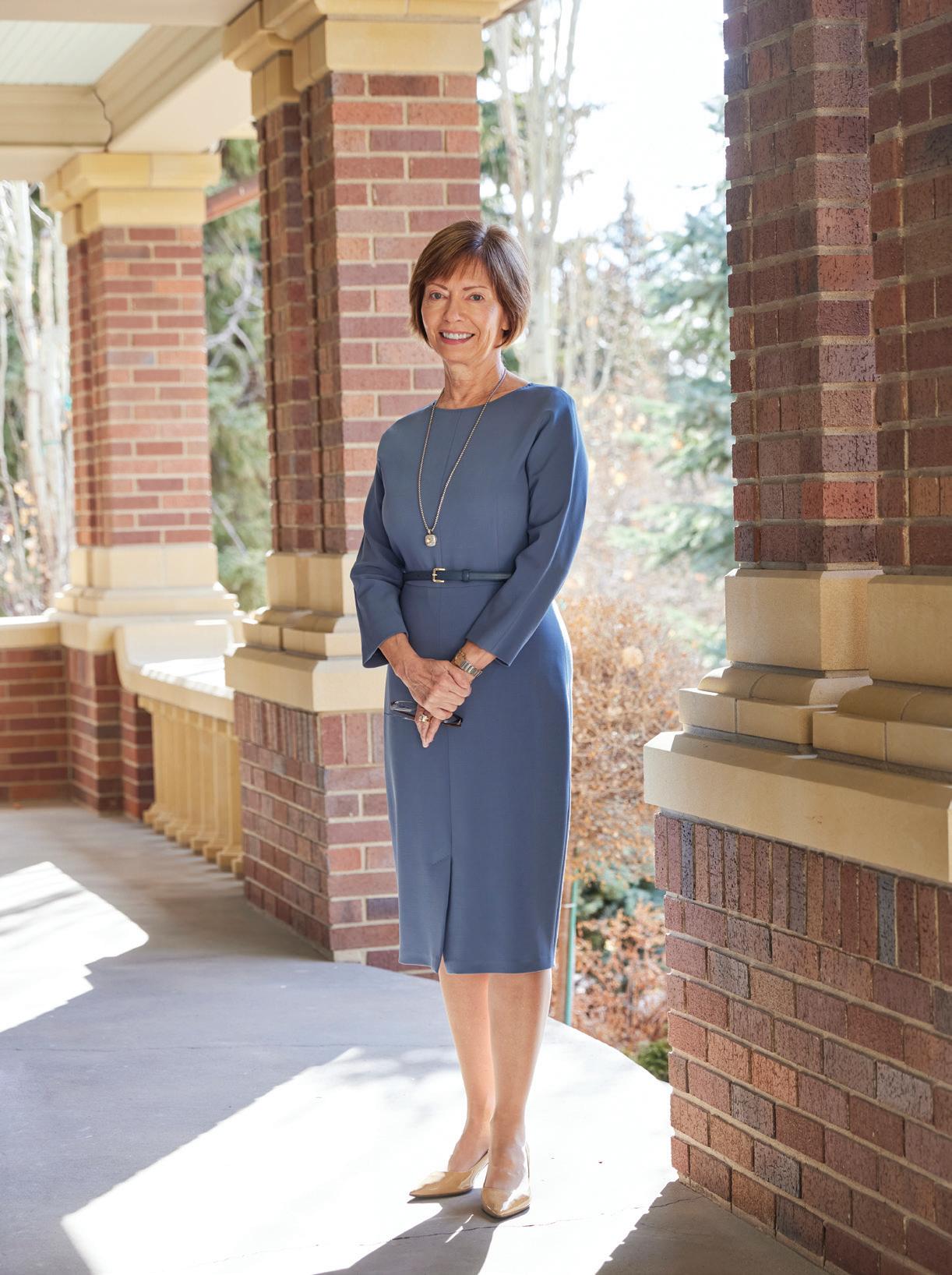
But she worries that some of the prescribed practices have gone too far in creating checklists or narrow rules that miss the bigger picture. For example, she is concerned about a new rule in Britain saying that if you are a director of a company for nine years, you are no longer deemed independent. And yet a well-grounded familiarity with a company’s business is critical to a director’s performance.
Ian Bourne agrees: “I think too many rules are not a good thing and the reality is we are relying on directors for experience and judgment. If you tie everything up in knots of rules, that is counter to the concept of relying on experienced people to apply good judgment.”
Like Sheppard, he believes in term limits to keep the board fresh, but he agrees too that nine years is simply too short as an arbitrary limit. He recommends a maximum 12 years – much less and you don’t get full value from a director; much more and there is the danger of becoming repetitive.
Andrea Rosen finds the discussion of excessive rules a matter of context. Yes, rules should not be applied mindlessly, as judgment continues to matter. But on the nine-year limit, for example, she would suggest a “comply or explain” approach, whereby a board and its nominating committee could exercise discretion about a senior director’s degree of independence.
Yet the rules, particularly around process, exist to protect against things going off the rails. She uses the example of an audit committee charter that might require regular review of the CEO’s expenses – an important exercise of the “trust and verify” standard that protects all players.
Rosen says her Emera colleague Sheppard is one director who is willing, when needed, to probe deeply into a corporation’s business
sens. Dieu merci qu’il y ait une demande. »
Mais elle s’inquiète de ce que certaines pratiques prescrites soient allées trop loin dans la création de listes de contrôle ou de règles étroites qui passent à côté de l’essentiel. Par exemple, elle réprouve une nouvelle règle une nouvelle règle ayant cours au Royaume-Uniselon laquelle si vous êtes membre d’un conseil depuis neuf ans, vous ne pouvez plus être considéré comme indépendant.
Ian Bourne est d’accord avec elle. « Il n’est pas bon d’avoir trop de règles. La réalité, c’est que nous nous en remettons à l’expérience et au jugement des administrateurs. Si nous étouffons tout dans un nœud de règles, c’est tout le contraire de faire confiance à l’expérience et au jugement des gens. »
Comme Mme Sheppard, il croit aux limites de mandat visant à maintenir un conseil jeune, mais admet que neuf ans est simplement une limite trop arbitraire et recommande un maximum de 12 ans.
Pour Andrea Rosen, c’est une question de contexte. Oui, les règles devraient être appliquées intelligemment, car54 le jugement continue d’importer. Mais sur la limite de neuf ans, par exemple, elle suggérerait une approche « se conformer ou s’expliquer », en vertu de laquelle le conseil et son comité de nomination pourraient exercer une discrétion quant au degré d’indépendance d’un administrateur de premier plan.
Mais les règles, surtout celles qui touchent le processus, existent pour empêcher que certaines choses deviennent hors de contrôle. Elle prend l’exemple de la charte d’un comité d’audit qui exigerait une analyse régulière de chaque dépense du chef de la direction.
Mme Rosen affirme que sa collègue Sheppard est désireuse, lorsque nécessaire, de creuser profondément les pratiques d’une entreprise
SHE WORRIES THAT SOME OF THE PRESCRIBED PRACTICES HAVE GONE TOO FAR IN CREATING CHECKLISTS OR NARROW RULES THAT MISS
THE BIGGER PICTURE. ELLE S’INQUIÈTE DE CE QUE CERTAINES PRATIQUES PRESCRITES SOIENT ALLÉES TROP LOIN DANS LA CRÉATION DE LISTES DE CONTRÔLE OU DE RÈGLES ÉTROITES QUI PASSENT À CÔTÉ DE L’ESSENTIEL.
to understand it. That may seem contrary to the “nose in, fingers out” principle, but “sometimes directors have to go deep,” Rosen explains. As for Sheppard, she relishes the entire board milieu with all its complexities. “I’ve been in the boardroom my entire career, as lawyer or a business person. My experience means this is very natural ground for me.” DJ
GORDON PITTS is a Toronto journalist whose latest book, Unicorn in the Woods: How East Coast Geeks and Dreamers Are Changing the Game, was longlisted for a National Business Book award.
Chair of power utility Emera Inc.
Présidence du conseil d'Emera Inc.
Born and raised in St. John’s, based in Calgary. 67 years old with two adult sons.
Bachelor of arts, Memorial University of Newfoundland.
A Rhodes Scholar, she earned an honours BA in jurisprudence combined with a bachelor and master of arts at Oxford University.
LL.B from McGill University.
Moved to Calgary in early 1980s with her late husband, an engineer, seeking careers in the energy capital.
Worked at law firm Macleod Dixon, 1981 to 1986, as an articling student and associate.
Partner at law firm Blake Cassels & Graydon, 1986 to 1993.
Joined Talisman Energy Inc., as executive vice-president, corporate and legal affairs, 1993 to 2008.
DIRECTORSHIPS
Chair of Emera Inc. since 2014, director since 2009.
Director at Suncor Energy, 2022 to present.
Director at ARC Resources Ltd., 2021 to present.
Director at pension fund investor Alberta Investment Management Corp. (AIMCo), 2018 to the end of 2022.
Director, Seven Generations Energy Ltd., 2016 to 2021.
Founder and lead director of Black Swan Energy Ltd. until it was sold, 2010 to 2021.
Director of Cairn Energy PLC, a British oil company, 2010 to 2018.
Chair of Research and Development Corp., a Crown corporation set up by the Province of Newfoundland and Labrador to stimulate R&D, 2009 to 2014.
pour mieux la comprendre. Cela est peut-être contraire à certains principes, mais « parfois les administrateurs doivent y aller à fond. » Quant à Mme Sheppard, elle adore le milieu des conseils et toutes ses complexités. « J’y ai été pendant toute ma carrière. C’est un terrain naturel pour moi. » DJ
GORDON PITTS est un journaliste de Toronto dont le plus récent ouvrage, Unicorn in the Woods: How East Coast Geeks and Dreamers Are Changing the Game, a été sélectionné pour le National Business Book Award.
Née et élevée à St. John’s, établie à Calgary. 67 ans, deux enfants adultes.
Baccalauréat ès arts, Université Mémorial de Terre-Neuve.
Détentrice d’une bourse d’études, elle a obtenu un baccalauréat spécialisé en jurisprudence combiné à un baccalauréat et une maîtrise ès arts de l’Université Oxford.
Diplômée de l’Université McGill.
Se fixe à Calgary fin des années 1980 avec son défunt mari. Cabinet juridique Macleod Dixon, de 1981 à 1986, comme stagiaire et associée.
Associée chez Blake Cassels & Graydon, 1996 à 1993.
De 1993 à 2008, vice-présidente exécutive, affaires commerciales et juridiques, chez Talisman Energy.
Joined Talisman Energy Inc., as executive vice-president, corporate and legal affairs, 1993 to 2008.
Présidente du conseil d’Emera depuis 1014, administratrice depuis 2009. Administratrice de Suncor Energy, depuis 2022.
Administratrice d’ARC Resources Ltd. depuis 2021.
Administratrice du fonds de retraite Alberta Investment Management Corp. (AIMCo), de 2018 à 2022.
Administratrice, Seven Generations Energy Ltd., 2016 à 2021. Fondatrice et administratrice principale, Black Swan Energy Ltd., jusqu’à sa vente, 2010 à 2021.
Admninistratrice de Cairn Energy PLC, pétrolière britannique, 2010 à 2018. Présidente du conseil de Research and Development, créé par le gouvernement de Terre-Neuve et Labrador pour stimuler la recherche R&D, de 2009m à 2014.
The case for building a company’s reputation is paramount, but what about that of the board? Amid competition and crisis – and as the ultimate authority in the eyes of many stakeholders – boards can benefit by making a name for themselves, Prasanthi Vasanthakumar writes La tâche de bâtir la réputation d’une entreprise est fondamentale, mais que dire de celle d’un conseil? Au cœur d’un climat de compétition et de crise – et à titre d’autorité ultime aux yeux de plusieurs parties prenantes – les conseils peuvent en profiter pour se faire un nom, écrit Prasanthi Vasanthakumar

IAN BOURNE KNOWS A THING OR TWO about controversy. In 2012, the corporate director of SNC-Lavalin Group Inc. stepped in as interim CEO to steer the engineering company through its corruption and fraud crisis before becoming chair of the board the following year. After his time at SNC-Lavalin, he joined the board of Hydro One, which became a target in Doug Ford’s election campaign for Premier of Ontario in 2018. Bourne has also served on the boards of multiple energy companies, which face continuing sector-based reputational issues around climate change.
“When things get tricky, you want to make sure you are going to get the benefit of the doubt,” Bourne says. “And the only way you get the benefit of the doubt from investors or the public is by having a good reputation. A cohesive and talented board contributes both to reputation creation and the ability to deal with reputational issues.”
IAN BOURNE EN CONNAÎT UN BOUT sur la controverse. En 2012, l’administrateur du Groupe SNC-Lavalin est devenu PDG par intérim afin de guider l’entreprise d’ingénierie à travers une crise de corruption et de fraude avant de devenir président du conseil l’année suivante. Après son mandat chez SNC-Lavalin, il s’est joint au conseil d’Hydro One, devenue une cible durant la campagne électorale de Doug Ford comme aspirant premier ministre de l’Ontario en 2018. M. Bourne a aussi siégé aux conseils de multiples entreprises dans le domaine de l’énergie, lesquelles font continuellement face à divers problèmes réputationnels reliés aux changements climatiques.
« Quand les choses deviennent épineuses, on veut s’assurer d’obtenir le bénéfice du doute, explique-t-il. Et la seule façon de l’obtenir de la part des investisseurs ou du public consiste à maintenir une bonne réputation. Un conseil talentueux et cohésif con-

Bourne observes that directors have become increasingly adept at handling reputational crises, especially in the age of social media, where bad news travels fast. But outside consultants can bring a fresh pair of eyes – including insights and discipline that are hard to generate by those caught in the fray.
“With SNC, we would have been in serious, serious trouble if we hadn’t used outside people … so having those experts around to guide you, particularly lawyers and communications people, is really critical to the successful resolution of reputational issues,” Bourne says.
Cheryl Kim is one such communications expert. A board advisor with PAA Advisory and Executive Act and a director at Trans Canada Trail, Kim notes that boards have few opportunities to make a name for themselves.
“Most boards don’t speak, if you will, right?” she says. “The goal is not for them to be out talking to the media or on the company’s behalf. They’re intended, traditionally, to be silent bodies behind the CEO, providing guidance behind generally closed doors. What that means is the board’s reputation is created by a very limited number of factors.”
One important factor in a board’s reputation is the quality and profile of its directors, Kim says. A board with “brand names,” such as respected former politicians and CEOs from blue-chip companies, implies trust. Similarly, a diverse board that reflects its stakeholders is seen as more credible, especially around issues of racism and systemic bias.
This trust and credibility are also essential for investors, says Lex Suvanto, global CEO of Edelman Smithfield, a financial communications firm. In investor research, Suvanto notes that when researchers ask investors whether their impressions of boards and trust in directors influence their decision to invest, the answer is “resoundingly, yes.” Investors must believe a board is engaged with the company and its strategy.
“That implies that a board has a reputation,” Suvanto says. “That said, if you ask a board, ‘Should you have a reputation?’ most directors would say, ‘Absolutely not, that’s not our business. The company has a reputation … [and] we’re here to support and make sure the company is equipped and pointed in the right direction.’ Nevertheless, it’s become clear that investors need to trust the board to make [an investment] decision. So that immediately implies there is a reputation at play.”
When Suvanto asks investors what a board should be known for, one of the first answers he gets is “backbone.” Investors need to see the board is strong, independent and capable of holding the CEO accountable.
Investors also look for digital expertise around the boardroom table. Shareholders want to know that the board can help a company through digital disruption. In many cases, a board composed of “super-tenured” directors with no previous exposure to technological
tribue à la fois à la création d’une réputation et à la capacité de réagir aux problèmes réputationnels. »
M. Bourne observe que les administrateurs sont devenus incroyablement habiles à gérer des crises réputationnelles, en particulier à l’heure des médias sociaux, alors que les mauvaises nouvelles circulent rapidement. Mais des consultants externes peuvent aussi projeter un œil nouveau sur la question – notamment exprimer des points de vue et une discipline qui sont difficiles à générer par des gens pris dans la tourmente.
« Chez SNC, nous aurions été dans une situation très difficile si nous n’avions pas eu recours à des gens de l’extérieur. (…) Le fait de pouvoir compter sur ces experts pour vous guider – en particulier avocats et gens de communication – est vraiment essentiel à la résolution fructueuse des problèmes de réputation. »\
Cheryl Kim fait partie de ces experts en communications. Conseillère spéciale chez PAA Advisory and Executive Act et administratrice chez Trans Canada Trail, elle souligne que les conseils ont peu d’occasions de se distinguer.
« La plupart des conseils ne parlent pas, si on peut s’exprimer ainsi. Leur objectif n’est pas d’échanger avec les médias ou de s’exprimer au nom de l’organisation. Il s’agit pour eux, traditionnellement, d’être des « organismes silencieux » derrière le chef de la direction et de lui fournir des orientations généralement derrière des portes closes. Ce que cela signifie, c’est que la réputation du conseil tient à un nombre très limité de facteurs. »
Un important facteur dans la réputation d’un conseil est la qualité (et le parcours) de ses administrateurs, poursuit Mme Kim. Un conseil comprenant des « noms de marque », comme ceux d’anciens politiciens et PDG respectés issus d’entreprises à forte capitalisation, est une source de confiance. De la même manière, un conseil diversifié qui reflète ses parties prenantes est considéré comme plus crédible, en particulier autour d’enjeux de racisme et de biais systémique.
Cette confiance et cette crédibilité sont aussi essentielles aux yeux des investisseurs, soutient Lex Suvanto, chef de la direction mondiale d’Edelman Smithfield, un cabinet de communications financières. En recherche d’investisseurs, M., Suvanto souligne que lorsque les solliciteurs demandent aux investisseurs si leurs impressions à l’égard des conseils et leur confiance envers les administrateurs influencent leur décision d’investir, la réponse est un « oui catégorique ». Les investisseurs doivent être convaincus que le conseil est engagé dans la stratégie de l’entreprise.
« Cela implique que le conseil a une réputation, poursuit M. Suvanto. Cela dit, si vous demandez à un conseil s’il devrait avoir une réputation, la plupart des administrateurs vous répondront : « Absolument pas; ça ne fait partie de notre boulot. L’entreprise a une réputation (…) et nous sommes là pour la soutenir et nous assurer qu’elle va dans la bonne direction. » Néanmoins, il est clair que les investisseurs ont besoin de croire que le conseil prend les bonnes décisions. Donc, cela signifie immédiatement qu’il y a une réputation en jeu. »
transformation might be seen by investors as falling short in this area.
Now that U.S. companies must use universal proxies in contested shareholder elections, boards have to up their game on communications, Suvanto adds. Universal proxies, which exist in Canada but are not mandatory, allow investors to vote against individual directors they don’t support. As a result, it’s critical to disclose exactly why a director has the right expertise for a company’s board. Investment bank Goldman Sachs, for example, now provides a more comprehensive explanation of its directors’ qualifications on its website.
“This feeds right into the concept of both director and board reputation because companies need to make sure that people understand why specific directors have specific skills that help the company succeed,“ Suvanto says.
As the world emerges from the Covid-19 pandemic, and amid accelerating sustainability and technology trends, as well as geopolitical unrest, the spotlight on boards is only growing. Boards are looking inwards to make sure directors have the right expertise to help the company, Suvanto says. Best-practice boards are engaging with shareholders one to three times a year to glean how directors and the CEO are perceived.
“If an activist investor knocks on their door and boards are equipped with that deeper, more actionable insight from their investors, they are moving faster to take action to engage in a settlement,” Suvanto says. “We’re seeing them act more quickly to make changes to the board or committee structure or other governance characteristics or the CEO. … Boards want to be known for being active and engaged … and when problems arise … they want investors to know they take action and do what it takes to maximize shareholder value.”
A board with a solid reputation is more likely to get the benefit of the doubt when things go wrong. But navigating a crisis requires skills in reputation communications, which Kim finds boards rarely
Quand Lex Suvanto demande à des investisseurs ce qui devrait distinguer un conseil, l’une des premières réponses qu’il obtient est : de la colonne vertébrale. Les investisseurs désirent voir un conseil solide, indépendant et capable de faire en sorte que la direction rende des comptes.
Maintenant que les entreprises américaines doivent recourir à des procurations universelles lorsque des élections d’actionnaires sont contestées, les conseils doivent améliorer leur processus de communication, ajoute M. Suvanto. Les procurations universelles, qui existent au Canada mais ne sont pas obligatoires, permettent aux investisseurs de voter contre les administrateurs qu’ils n’appuient pas. En conséquence, il est essentiel de divulguer exactement les raisons pour lesquelles un administrateur possède l’expertise nécessaire pour siéger. La banque d’investissement Goldman Sachs, par exemple, fournit maintenant sur son site Web une explication plus complète des qualifications de ses administrateurs.
« Cela s’inscrit directement dans le concept de la réputation de l’administrateur et du conseil parce que les entreprises doivent s’assurer que les gens comprennent pourquoi un administrateur en particulier possède des compétences spécifiques qui aident l’entreprise à prospérer », explique-t-il.
Au moment où le monde émerge de la pandémie de Covid-19 et que les tendances en matière de durabilité et de technologies s’accélèrent, en plus des troubles géopolitiques, les conseils d’administration sont de plus en plus sous les feux de la rampe. Ils se tournent donc vers l’interne pour s’assurer que les administrateurs possèdent l’expertise nécessaire. Les plus performants d’entre eux communiquent avec les actionnaires d’une à trois fois par an pour savoir comment les administrateurs et le chef de la direction sont perçus.
« Si un investisseur activiste cogne à votre porte et que ses conseils offrent ces renseignements plus approfondis et plus pratiques à l’intention de leurs investisseurs, ils peuvent s’engager plus rap-
A board with a solid reputation is more likely to get the benefit of the doubt when things go wrong. But navigating a crisis requires skills in reputation communications. Un conseil jouissant d’une solide réputation est plus susceptible d’obtenir le bénéfice du doute lorsque les choses tournent mal. Mais la navigation en temps de crise exige des compétences en communications réputationnelles.
prioritize during recruitment. As a result, board members may not have the expertise to cross-examine the communications strategy proposed by the business or advisors.
“It’s important [to have these skills] because increasingly, the biggest risks coming to a company’s reputation are around brand, marketing, communications and societal expectations,” Kim says.
Hockey Canada’s dramatic implosion last summer underscores the importance of solid reputation communications. The sports organization was criticized for its handling of sexual assault allegations, but despite the public outcry and calls for leadership to resign, the board refused to clean house.
As an outsider looking in, Kim observes several problems with this response. First, the board chair, not the CEO, spoke on behalf
idement dans une transaction, assure M. Suvanto. On les voit agir plus vite pour effectuer les changements nécessaires au conseil, à la structure de ses comités, à l’identité de son PDG ou à d’autres volets de leur gouvernance. (…) Les conseils veulent être reconnus comme actifs et engagés et lorsqu’un problème survient, ils souhaitent que les investisseurs sachent qu’ils agissent et font le nécessaire pour maximiser la valeur de leurs actionnaires. »

Un conseil jouissant d’une solide réputation est plus susceptible d’obtenir le bénéfice du doute lorsque les choses tournent mal. Mais la navigation en temps de crise exige des compétences en communications réputationnelles, ce qui, déplore Mme Kim, est une denrée qui ne fait pas l’objet de recherches prioritaires par les conseils à l’étape du recrutement. En conséquence, des membres
of the organization, which blurred the lines around each role’s responsibilities. Second, the board chair wasn’t a strong spokesperson. Third, key messages that framed Hockey Canada as the victim did not resonate with the public.
“They lost the battle around public confidence,” Kim says. “And at that point, it didn’t matter how right the original decisions were or weren’t. Somebody needed to get fired. … The board appeared, from the outside, to be protecting the executives without understanding they had lost public support ... and so, because the board wanted to be right and that was more important than protecting reputation, they ultimately all lost their jobs.”
Hindsight is 2020, but the newly appointed board of directors for Hockey Canada is learning from the past.
“We show that we got the message and we’re dealing with it,” says Jonathan Goldbloom, who joined the sports organization’s board last December. “This means having a game plan, explaining the game plan, consulting with different groups on the game plan, getting their endorsement, and then setting milestones so you’re measured against what you said you were going to do.”
Goldbloom, who also serves on the board of Via Rail and runs a communications firm, is chairing the search committee for Hockey Canada’s new CEO. He points to the committee as an example of the organization’s new approach of transparency and engagement. With representatives from different parts of the hockey universe – including sponsors, member organizations, former Olympic hockey players and a deputy minister – the search committee wants to ensure all concerns are addressed. The draft job profile was also shared with various stakeholder groups for input, and modified to reach a consensus.
“These are the kinds of things you need to do when you’re in a crisis that somebody should be doing normally,” Goldbloom says.
The crises at Hockey Canada and SNC-Lavalin called on their boards to take extraordinary actions, but with different outcomes. When Ian Bourne stepped down from the board of SNC-Lavalin in 2015, the Financial Post described him as “the man who saw SNC-Lavalin through the darkest days of its crisis.” An investment analyst in the same article suggested he had “done the most out of all SNC’s directors in the last five years.”
Boards may operate behind the scenes most of the time, but stakeholders are always paying attention. For his part, Bourne says reputation and the successful resolution of reputational issues often boil down to how well board members work together. Which is why experts say directors should actively build their reputations –both as individual members and as a board – even as they continue to work backstage with noses in and fingers out. Then if the board must step in when things go sideways, its reputation and response can determine how well the organization weathers the storm. DJ
du conseil peuvent ne pas posséder l’expertise nécessaire pour remettre en question la stratégie de communications proposée par l’entreprise ou ses conseillers.
« Il est important de posséder ces compétences parce que de plus en plus, poursuit Cheryl Kim, les plus grands risques qui menacent la réputation d’une organisation tournent autour de la marque, du marketing, des communications et des attentes sociales. »
L’implosion spectaculaire de Hockey Canada survenue l’été dernier a souligné l’importance de solides communications réputationnelles. L’organisation sportive a été critiquée pour sa gestion d’allégations d’agressions sexuelles, mais malgré l’indignation et les appels à la démission de ses dirigeants, le conseil a refusé de faire maison nette.
« Ils ont perdu la bataille de la confiance du public, explique Cheryl Kim. Et à ce point, peu importait que la décision d’origine soit bonne ou mauvaise. Il fallait que quelqu’un paye. Parce que les membres du conseil voulaient avoir raison et que c’était plus important que la réputation de l’organisme, ils ont tous perdu leur emploi. »
« Nous avons compris le message et nous nous gouvernons en conséquence, affirme Jonathan Goldbloom, qui s’est joint au conseil de l’organisation en décembre. Cela consiste à proposer un nouveau plan de match, à l’expliquer, à consulter divers groupes à son sujet, à obtenir leur appui et à mesurer les progrès. »
M. Goldbloom préside également le comité de recherche du conseil de Hockey Canada en vue de trouver un nouveau chef de la direction. Soutenu par des représentants de divers horizons de l’univers du hockey – commanditaires, organisations membres, anciens joueurs olympiques et un sous-ministre – le comité veut s’assurer que toutes les préoccupations soient prises en compte.
Les crises à Hockey Canada et Lavalin ont enjoint leurs conseils à prendre des mesures extraordinaires, mais qui ont offert des résultats différents. Quand Ian Bourne a quitté le conseil de SNC-Lavalin en 2015, le Financial Post l’a décrit comme « l’homme qui a présidé les destinées de SNC-Lavalin pendant les heures les plus sombres de la crise. » Un analyste d’investissement, dans le même article, ajoutait que M. Bourne avait « fait davantage pour Lavalin, parmi tous ses administrateurs, que tous ses autres administrateurs. »
Les conseils peuvent bien agir en coulisses la plupart du temps, mais les parties prenantes ont toujours l’œil ouvert. En ce qui concerne M Bourne, la réputation et la solution des problèmes de réputation se réduit souvent à la manière dont les administrateurs travaillent ensemble. Voilà pourquoi les experts affirment que les administrateurs devraient activement bâtir leur réputation, à la fois au plan individuel et en tant que groupe – et ce même s’ils continuent de remplir leur mandats loin des feux de la rampe. DJ
PRASANTHI VASANTHAKUMAR est gestionnaire du contenu éditorial de l’IAS.
The hybrid work model, together with new financial pressures on businesses and individuals, have emboldened some employees to steal. Boards and regulators are responding with new standards and tighter controls, Virginia Galt writes
Le mode de travail hybride, tout comme les nouvelles pressions financières sur les entreprises et les personnes, en a poussé certains à voler. Conseils et autorités réglementaires répondent au défi avec de nouvelles normes et des contrôles plus serrés, écrit Virginia Galt
IN THE THREE YEARS SINCE the global pandemic irrevocably changed the way work gets done, Canadian boards of directors –under pressure from external auditors – have been tightening their oversight of occupational fraud risks. The prolonged public health lockdown, which forced countries to switch to remote work, exposed weaknesses in organizations’ internal control systems. “The schemes got bolder and bolder,” says corporate director Alan Mak, national forensics practice leader at BDO Canada LLP and a member of the Chartered Professional Accountants of Canada board.
“It got kind of wild,” says Mak. The audacity was stunning. Some organizations fell victim to procurement fraud. “It was one thing [for procurement managers] to take kickbacks from suppliers, but we saw more than a handful of situations where procurement managers were ordering supplies that were never delivered and never existed.”
No sector is immune. The Government of Ontario, for instance, was scammed by an information technology director with access to the Education Ministry’s payment processing system. The employee recently pleaded guilty to embezzling $11-million in pandemic aid funds intended to help parents with online schooling expenses. The funds had been diverted to bank accounts established under false identities.
While the nature of fraudulent activities may have shifted since then, the risk hasn’t abated, says Mak. Changing economic conditions – a strong recovery two years into the pandemic followed by high inflation and slower growth – have resulted in new pressures and temptations for employees to engage in theft, corruption and manipulation of financial results.
The widespread adoption of hybrid work arrangements, with employees alternating between on-site work and remote work, poses challenges for some organizations in terms of monitoring workforce activities. There is no evidence to suggest that the workforce is rife with thieves and fraud artists – a large majority of employees would never steal or abuse the trust of their employers, the Association of Certified Fraud Examiners says in its most recent international report on occupational fraud. But those who do commit fraud typically evade detection for 12 months before being caught, costing their organizations, on average, a 5-percent loss in revenue – and the losses can reach tens of millions of dollars, depending on the magnitude of the scheme. The offences range from expense account padding – from the employee who bought cellphones for their entire family and charged it to the company, to the Ontario IT director who, in addition to pocketing pandemic aid funds, confessed that he had also taken $36-million in kickbacks for computing services over the prior decade. He was sentenced to 10 years.
Mak’s impression, from what he has observed in Canada, is that “fraud certainly seems to be on the rise, and attention or scrutiny by organizations on fraud risk is also on the rise.” In the past year, he said, there has been an uptick in the number of employees citing money pressures and the high cost of living as their reasons for crossing the line.
AU COURS DES TROIS ANNÉES écoulées depuis que la pandémie a changé nos modes de travail, les conseils d’administration canadiens – sous la pression d’auditeurs externes – ont resserré leur surveillance des risques de fraude en milieu de travail. Le confinement prolongé décrété par les organisations de santé publique, qui a forcé les pays à s’en remettre au travail à distance, a exposé les faiblesses des systèmes de contrôle interne des organisations. « Les complots de fraude sont de plus en plus audacieux, souligne l’administrateur Alan Mak, associé et chef national des services en juricomptabilité chez BDO Canada LLP et membre du conseil des Comptables professionnels agréés du Canada.
« Leur témérité était stupéfiante. Certaines organisations ont été victimes de fraude à l’approvisionnement. C’était une chose (pour les gestionnaires de l’approvisionnement) de toucher un bakchich des fournisseurs, mais on voyait aussi plus qu’une poignée de situations où les chefs de l’approvisionnement commandaient des fournitures qui n’étaient jamais livrées et n’avaient jamais existé. »
Aucun secteur n’est à l’abri. Le gouvernement de l’Ontario, par exemple, a été arnaqué par un directeur des technologies de l’information ayant accès au système de traitement de la paye du ministère de l’Éducation. L’employé a récemment plaidé coupable d’avoir détourné 11 millions de dollars d’un fonds de secours destiné à des parents faisant face à des dépenses scolaires en ligne.
Même si la nature des activités frauduleuses s’est modifiée depuis, le risque n’en est pas moins toujours présent, explique M. Mak. Les conditions économiques changeantes – forte reprise deux ans après le début de la pandémie suivie d’une poussée inflationniste et d’une croissance faible – ont exercé de nouvelles pressions et tentations sur certains employés pour s’engager dans le vol, la corruption et la manipulation de résultats financiers.
L’adoption généralisée de modes de travail hybrides pose des défis à certaines organisations à l’égard de la surveillance des activités de la main-d’œuvre. Rien ne suggère que la force de travail soit truffée de voleur et de fraudeurs. Mais ceux et celles qui commettent ces méfaits échappent généralement à la détection pendant 12 mois avant d’être pris. Cela coûte à leurs organisations, en moyenne, une perte de cinq pour cent de revenus. Et ces pertes peuvent atteindre des dizaines de millions de dollars, selon l’ampleur de la combine. Les accusations vont du gonflement de notes de frais – de l’employé qui achète des téléphones intelligents à toute sa famille aux frais de la compagnie au directeur des technologies de l’information qui, en plus d’empocher des pots-devin pour des services informatiques, a aussi avoué avoir touché 36 millions de dollars de la même façon au cours de la décennie précédente. Il a été condamné à dix ans de prison.
De ce qu’il a observé au Canada, M. Mak retient que « la fraude semble certainement en hausse, alors que l’attention ou la surveillance par les organisations sont aussi en progression. » Au cours de la dernière année, dit-il, on a noté une hausse du nombre d’employés évoquant des pressions monétaires et le coût élevé de la vie pour expliquer pourquoi ils avaient franchi le pas.
Fraudsters typically evade detection for 12 months before getting caught, costing their organizations, on average, a 5-per-cent loss in revenue.
New risks are always emerging, and “the bad guys are getting smarter and more sophisticated by the day,” says corporate director Benita Warmbold, an Institute of Corporate Directors Fellow and chair of the Canadian Public Accountability Board, the regulatory body that oversees the firms that audit publicly traded companies. CPAB is in the process of developing new standards to strengthen the quality of fraud audits and enhance the ability of auditors and, by extension, their clients to identify, assess and respond to fraud risks.
Fraud happens, but strong internal control frameworks can minimize the risks. Ideally, says Warmbold, “you want to catch it before it happens.” Failing that, the ability to move quickly to shut it down will reduce the damage.
In the corporate sector, external audit teams have incorporated fraud risk analysis into the annual inspections of their clients’ financial statements. “Directors realize that fraud can have a serious impact on their finances and reputation and, ultimately, on capital markets in general,” says Warmbold, a chartered professional accountant who also serves on the boards of Bank of Nova Scotia, SNC-Lavalin and Methanex Corp.
The CPAB’s fraud thematic review, published in May, 2022, provides an indication of the deeper scrutiny organizations can expect on compensation arrangements, the effectiveness of whistleblower programs, and whether they apply the fraud-risk lens as rigorously to managers as they do to employees. While organizations may be reluctant to question the integrity of managers, the CPAB notes that fraudulent financial reporting schemes result in far greater losses than employees’ misappropriation of assets.
On compensation, market expectations and pressure to perform, the CPAB has this to say: “Auditors may learn that management has a strong incentive to manipulate financial results because a significant proportion of their compensation strategy (bonuses, stock options, etc.) is contingent on achieving aggressive financial targets. … Auditors may [also] learn that analysts have unduly aggressive or unrealistic expectations about an en-
De nouveaux risques sont toujours émergents et « les méchants deviennent de jour en jour plus intelligents et raffinés », souligne l’administratrice Benita Warmbold, Fellow de l’Institut des administrateurs de sociétés et présidente du conseil d’administration du Conseil canadien sur la reddition de comptes, l’organisme réglementaire de surveillance des firmes vérificatrices des entreprises inscrites en bourse. Le CCRC est à élaborer de nouvelles normes afin de renforcer la qualité des audits reliés à la fraude et d’améliorer la capacité des auditeurs à identifier, évaluer et répondre aux risques de fraude.
La fraude existe, mais des cadres solides de contrôle interne peuvent en minimiser les risques. Idéalement, poursuit Mme Warmbold, « on veut d’abord empêcher le délit avant qu’il survienne. » Sinon, la capacité d’arriver rapidement à le stopper réduira au moins les dommages.
Dans le secteur des entreprises, des équipes d’audit externe ont incorporé des analyses de risque de fraude dans les inspections annuelles des rapports financiers de leurs clients. « Les administrateurs réalisent que la fraude peut avoir de sérieux impact sur leurs finances et leur réputation et, ultimement, sur les marchés d’investissement en général, » soutient Mme Warmbold, une comptable professionnelle agréée qui siège aussi aux conseils de la Banque Scotia, SNC Lavalin et Methanex Corp.
L’analyse thématique sur la fraude, publiée par le Conseil canadien de reddition de comptes en mai 2022, offre une indication de la surveillance approfondie à laquelle les organisations peuvent s’attendre sur les ententes de rémunération, l’efficacité des programmes de lanceurs d’alerte et la question de savoir si elles appliquent la lentille anti-fraude aussi rigoureusement aux membres de la direction qu’aux employés. Même si les organisations sont souvent réticentes à remettre en question l’intégrité de leurs gestionnaires, le CCRC souligne que les arnaques de rapports financiers frauduleux se traduisent par des pertes bien plus élevées que les malversations commises par les employés.
En ce qui concerne la rémunération, les attentes du marché et la
No sector is immune. The Government of Ontario, for instance, was scammed by an information technology director with access to the Education Ministry’s payment processing system. Aucun secteur n’est à l’abri. Le gouvernement de l’Ontario, par exemple, a été arnaqué par un directeur des technologies de l’information ayant accès au système de traitement de la paye du ministère de l’Éducation.
tity’s financial performance by listening … to earnings calls with analysts or reading [other] analysts’ research reports.”
If managers undertake to meet the analysts’ “unrealistic expectations” on those earnings calls, the auditors are more likely to take a closer look at the books.
While CPAB is working with the audit community, finance professor Alexander Dyck leads discussions about fraud in the ICD’s Directors Education Program (DEP) at the University of Toronto’s Rotman School of Management. It’s always a galvanizing topic, says Dyck, who estimated in a recent research report that two-thirds of corporate frauds go undetected.
“The people best positioned to identify whether there is a problem are the directors because they can demand the information and take steps to correct it,” says Dyck, an academic director of the DEP. In order to do this, though, directors need to think about “board composition issues on an ongoing basis to make sure they are best positioned to create and protect value.”
They might also want to evaluate the independence of their external auditors, says Dyck, noting that – before the run on deposits and its recent demise – Silicon Valley Bank had used the same audit firm for more than 20 years. Does the audit firm’s professional skepticism begin to fade after such a long tenure? Will the risk assessment be as rigorous?
“There is a lot of attention being paid to this in the U.S. There are a lot of shareholder proposals [suggesting that audit firms should be switched out after serving for a certain number of years.]”
To help directors better assess the likelihood of fraud taking place, Dyck and other researchers are delving into the financial statements of firms that had previously been caught.
“It’s instructive to see the circumstances that lead to the likelihood of fraud, and one of them is the circumstance that we are seeing right now. The economy has been going well and then it starts to slow down and there are a lot of people who want to keep the music playing. There isn’t very active monitoring because people have been doing well by the firm, so they give the benefit of the doubt to whatever is going on,” says Dyck.
“This combination of high motive and low monitoring seems to be an active breeding ground for fraud” and misrepresentation in the financial reports, he says.
Corporate director Kenneth Hughes, a certified fraud examiner and former auditor-general for the City of Ottawa, says fraud risk assessments should capture both internal and external threats “when you look at all the other risks that you face, like ransomware and phishing expeditions to try to get someone to respond to an email that gives a bad actor access to your internal accounting systems, for example.”
The board’s role is to ensure that management has conducted the fraud risk analysis, that it is updated regularly and that it is monitoring emerging risks. It cannot just be an annual exercise. “If you are monitoring emerging risks, you have to break the pattern, you can’t stick to a schedule,” says Hughes, a chartered professional
pression de produire, le CCRC a ceci à dire : « Les auditeurs peuvent apprendre que la direction a une forte motivation à manipuler les résultats financiers parce qu’une proportion importante de leur stratégie de rémunération repose sur l’atteinte de cibles financières dynamiques. (…) Les auditeur peuvent aussi apprendre que les analystes ont adopté des attentes indûment agressives ou irréalistes quant à la performance financière de l’organisation en écoutant des entretiens avec des analystes ou en lisant les rapports de recherche de certains autres. »
Si les gestionnaires entreprennent d’adopter les « attentes irréalistes » des analystes exprimées lors de ces appels, les auditeurs sont plus susceptibles de regarder de plus près les rapports financiers.
Alors que le CCRC collabore avec la communauté d’audit, le professeur de finances Alexander Dyck mène des discussions sur la fraude dans le cadre du Programme de perfectionnement des administrateurs offert à la Rotman School of Management de l’Université de Toronto. Il s’agit toujours d’un sujet mobilisateur, explique M. Dyck, qui a estimé dans un rapport récent que les deux tiers des fraudes en entreprise demeurent non détectés.
« Les gens les mieux positionnés pour identifier s’il y a problème sont les administrateurs parce qu’ils peuvent exiger l’information et prendre les mesures nécessaires pour corriger les choses », soutient M. Dyck. Pour y arriver, cependant, les administrateurs doivent songer aux « enjeux de composition du conseil de façon continue afin de s’assurer qu’ils sont les mieux en position de créer et protéger la valeur. »
Ils pourraient aussi vouloir évaluer l’indépendance de leurs auditeurs externes, poursuit-il, soulignant que la Banque Silicon Valley avait recouru à la même firme pendant plus de vingt ans. Est-ce que le scepticisme professionnel d’un cabinet d’audit commence à s’estomper après un tel mandat? L’évaluation du risque demeure-telle aussi rigoureuse?
Pour aider les administrateurs à mieux évaluer la probabilité d’une fraude en cours, le professeur Dyck et d’autres chercheurs approfondissent les rapports financiers des cabinets qui se sont récemment fait prendre.
« Il est instructif, poursuit-il, de voir les circonstances menant à la probabilité d’une fraude et l’une d’entre elles est celle dont nous sommes présentement témoins, explique M. Dyck. L’économie s’est bien comportée, puis elle a commencé à ralentir et il y a beaucoup de gens qui veulent que cette musique continue. La surveillance n’est pas très active parce que l’organisation est satisfaite de ses gens. Alors, elle leur donne le bénéfice du doute, peu importe ce qui se produit. »
« Cette combinaison de motivation élevée et de faible surveillance semble un terrain fertile pour la fraude, dit-il, et les fausses déclarations dans les rapports financiers. »
L’administrateur de sociétés Kenneth Hugues, un examinateur de fraude agréé et ancien vérificateur général de la Ville d’Ottawa, affirme que les évaluations de risque de fraude devraient englober à la fois les menaces internes et externes.
combination of high motive and low monitoring creates a breeding ground for fraud, financial experts say.
Robust internal controls and a well-run whistleblower program can be a powerful deterrent to people who might otherwise commit fraud.
Des contrôles internes robustes et un programme de lanceur d’alerte bien mené peuvent s’avérer de puissants dissuasifs pour des gens qui autrement pourraient commettre une fraude.
accountant who chairs the board of Ottawa-based Your Credit Union Ltd. and serves on the board of Perley Health, an Ottawa-based not-for-profit organization that provides long-term care and independent living apartments for veterans and seniors.
Robust internal controls and a well-run whistleblower program can be a powerful deterrent to people who might otherwise commit fraud. Furthermore, the value of whistleblowers in alerting executives and boards to potential wrongdoing cannot be overstated, says Hughes. The Association of Certified Fraud Examiners reports that 42 per cent of occupational frauds are initially detected through tip lines. “Therefore, implementing effective processes to solicit and thoroughly evaluate tips is a crucial priority for fraud examiners,” ACFE says in its report “Occupational Fraud 2022: A Report to the Nations.” More than half of the tips come from employees and nearly one-third come from outside parties, including customers, vendors and competitors.
Whistleblower programs only have credibility if the tips are considered and acted on when necessary, says Hughes. CPAB says in its fraud thematic review that the lack of a whistleblower program, or
Le rôle du conseil consiste à s’assurer que la direction ait mené une analyse du risque de fraude qui soient régulièrement mise à jour et surveille également les risques en émergence. Ça ne peut pas être qu’un exercice annuel. « Si vous surveillez des risques émergents, vous devez briser un modèle; vous ne pouvez pas vous en remettre seulement à un échéancier », souligne M. Hugues, un comptable professionnel agréé qui préside le conseil de Your Credit Union Ltd d’Ottawa et siège à celui de Perley Health, une organisation à but non lucratif qui offre des soins à long terme et des appartements à des anciens combattants et à des aînés.
Des contrôles internes robustes et un programme de lanceur d’alerte bien mené peuvent s’avérer de puissants dissuasifs pour des gens qui autrement pourraient commettre une fraude. En outre, on ne saurait trop souligner la valeur des lanceurs d’alerte qui préviennent la direction et les conseils de possibles méfaits. Plus de la moitié des indications à cet égard proviennent d’employés et près d’un tiers de tierces parties, dont des clients, des vendeurs et des concurrents.
an ineffective one, may be indicative of weaknesses in the entity’s control environment. External auditors are particularly interested in hearing from management or audit committee members about whether any of the tips received through this process relate to the entity’s financial reporting. And, if so, how were they dealt with?
Directors should keep an open mind when issues raised by whistleblowers are elevated to the board level, says Warmbold. “You have to go at those with a high degree of skepticism – skepticism not being ‘management is right and the whistleblower is wrong,’ but really trying to think and be inquisitive as to what the whistleblower is getting at.”
When a serious breach is raised with the board, directors should ask hard questions, says BDO’s Mak. Some companies, reassured by management that “we have got it under control, it won’t happen again, don’t worry about it” don’t probe any further. This is a mistake, Mak says. “As directors, it is important that we form our own understanding, a good understanding, of what happened, how it happened, why it happened and [then] challenge management on why they don’t think it would happen again.”
Some of the biggest frauds Mak has seen have been perpetrated by high-level managers at smaller companies and family businesses, controllers and chief financial officers who have been in their positions for 10, 15 or 20-plus years. “They’re trusted, they have gone to family weddings … and they have perpetrated some of the biggest frauds because they have the ability, they have access to records, the signing authority, they can do it.”
This fits with the Association of Certified Fraud Examiners research. “The ability to commit fraud is a skill, and our data suggests that the longer a person works for a company, the better they become at fraud,” ACFE said in its report, which was based on 2,110 cases of occupational fraud in 133 countries investigated between January, 2020 and September, 2021.
Mak says the forensic specialists are typically called in after a potential fraud has been detected “and it hits the fan.” CPAB is pushing audit teams to enlist their forensic colleagues earlier in the process to brainstorm on the factors they should take into account in order
Les programmes de lanceurs d’alerte ne seront toutefois crédibles que si ces indications sont prises en compte et font l’objet de mesures lorsque nécessaire. Le CCRC souligne dans son analyse thématique sur la fraude que le manque de programmes de lanceurs d’alerte – ou la présence d’un programme inefficace – peut révéler des faiblesses dans l’environnement de contrôle de l’organisation. Les auditeurs externes sont particulièrement intéressés à savoir de la part de la direction ou de membres du comité d’audit si l’une ou l’autre de ces indications est liée aux rapports financiers de l’organisation.
Les administrateurs devraient garder l’esprit ouvert quand des enjeux soulevés par des lanceurs d’alerte atteignent le niveau du conseil, explique Mme Warmbold. « Il faut aller vers ceux qui font preuve d’un degré élevé de scepticisme – le scepticisme n’étant pas l’idée que la direction a raison et que le lanceur d’alerte a tort, mais d’essayer vraiment de déterminer là où le lanceur d’alerte veut en venir. »
Quand une infraction grave est soulevée au conseil, les administrateurs devraient poser des questions difficiles, explique M. Mak. C’est une erreur que d’écouter la direction qui recommande de ne pas s’en faire et assure que ça ne se reproduira plus. « Comme administrateurs, il est important que nous formions notre propre compréhension de ce qui s’est produit, de la manière et des raisons pour lesquelles cela est arrivé. »
Certaines des fraudes les plus massives dont M. Mak a été témoin ont été perpétrées par des cadres de haut niveau de petites entreprisses et d’entreprises familiales – contrôleurs et chefs de la direction financière qui ont été en poste pendant 10, 15 ou plus de 20 ans. « On leur fait confiance, ils ont assisté à plein de noces familiales (…) et ils ont perpétré certaines des fraudes les plus massives parce qu’ils en avaient la capacité, qu’ils avaient accès aux dossiers, à l’autorité de signature. »
« La capacité de commettre une fraude est un talent et nos données suggèrent que plus une personne travaille longtemps dans une entreprise, plus elle est susceptible de passer à l’acte », souligne l’Association des examinateurs agréés en fraude.
Some of the biggest frauds Mak has seen have been perpetrated by high-level managers at smaller companies and family businesses. Certaines des fraudes les plus massives dont M. Mak a été témoin ont été perpétrées par des cadres de haut niveau de petites entreprisses et d’entreprises familiales.
to perform a high-quality fraud risk identification and assessment.
This is welcome news to the forensics folks. “Focusing more on fraud risk analysis is as important as focusing on fraud that has actually occurred,” says Hughes.
It makes sense to invite the accountants who specialize in financial crime investigation to share their expertise at the planning stage of an audit, says Mak. “It was always an informal practice, but it’s becoming more common across the profession now, and that’s an improvement.” DJ
VIRGINIA GALT, a former business and education reporter for The Globe and Mail, covers legal, education and management issues for a number of publications.
M. Mak explique que les spécialistes juridiques sont généralement saisis du dossier après qu’une fraude possible ait été détectée et « dépasse les bornes. » C’est une bonne nouvelle pour ces spécialistes, soutient M. Hugues. « Se concentrer davantage sur l’analyse du risque de fraude est aussi important que de le faire sur des fraudes déjà survenues. »
Il serait logique d’inviter les comptables spécialisés dans les crimes financiers de partager leur expérience au stade de planification de l’audit, conclut M. Mak. DJ
VIRGINIA GALT, ex-journaliste spécialisée en économie et en éducation pour le Globe and Mail, couvre les questions juridiques, d’éducation et de gestion pour un certain nombre de publications.
How fraudsters steal, cover it up and get caught Une fraude en entreprise dure en général 12 mois avant d’être détectée
No organization is immune from fraudsters, says the Association of Certified Fraud Examiners in its international study “Occupational Fraud 2022: A Report to the Nations.” They attack large multinational businesses, small private companies, government agencies and non-profits. The report is based on 2,100 cases of occupational fraud investigated between January, 2020 and September, 2021 in 133 countries.
THE FINANCIAL TOLL
Financial statement fraud accounted for only 9 per cent of cases, but was the most damaging, with a median loss of US$593,000 per case, says the ACFE, noting that fraudsters do not necessarily limit themselves to one form of fraud.
Corruption (including bribery, conflicts of interest and extortion) was found in 50 per cent of the cases, with a median loss of US$150,000. Asset misallocation (including theft, false billing schemes and inflated expense reports) was found in 89 per cent of the cases, causing a median loss of US$100,000.
THE COVER UP
The top five concealment methods reported by the ACFE are: creation of fraudulent physical documents, alteration of physical documents, creation of false electronic documents, alteration of electronic documents, and destruction or withholding of physical documents.
BUSTED
The old-fashioned whistleblower line is the most effective method for detecting fraud, accounting for 42 per cent of investigations. Most tips come from employees. Internal audits catch 16 per cent, and management reviews detect 12 per cent, the ACFE reports.
Eight per cent of cases in the study involved cryptocurrency, most frequently used for bribes, kickbacks and converting misappropriated assets. “Anecdotal evidence suggests this number will rise in future years,” the ACFE says in its report.
Aucune organisation n’est à l’abri des fraudeurs, affirme l’Association des inspecteurs certifiés de fraudes dans son étude internationale « Occupational Fraud 2022 : A Report to the Nations ». Les fraudeurs s’attaquent aux grandes entreprises multinationales, aux petites entreprises privées, aux agences gouvernementales et aux organisations à but non lucratif. Ce rapport est fondé sur quelque 2 100 cas de fraude en entreprise qui ont fait l’objet d’enquêtes entre janvier 2000 et septembre 2021 dans 133 pays.
LE COÛT ÉCONOMIQUE
Les fraudes associées aux rapports financiers n’ont compté que pour 9 pour cent des cas, mais les plus accablants, avec une perte médiane de 593 000 dollars US par cas, montrent que les fraudeurs ne se limitent pas nécessairement à une seule forme de fraude.
La corruption (dont les pots-de-vin, les conflits d’intérêts et l’extorsion) a été utilisée dans 50 pour cent des cas, pour une perte médiane de 150 000 dollars US.
La mauvaise allocation de ressources (vol, fausse facturation et notes de frais gonflées) a été utilisée dans 89 pour cent des cas, causant une perte médiane de 100 000 dollars US.
LA DISSIMULATION
Les cinq principales méthodes de dissimulation rapportées par l’AICF sont la création de documents physiques frauduleux, l’altération de documents physiques, la création de faux documents électroniques, l’altération de documents électroniques ainsi que la destruction ou la retenue de documents physiques.
CRYPTO CRIME
Huit pour cent des cas impliquent de la criptomonnaie, des potsde-vin et la conversion de ressources détournée. « Tout indique que ces façons de faire augmenteront dans l’avenir », signale l’AICF dans son rapport.
In the past few months, artificial intelligence (AI) technology has burst into the public realm, aiding everyone from students and doctors to investors and scientists, while at the same time creating new challenges for regulators – who once again find themselves scrambling to keep pace with the speed of technological change. The head of Canada’s largest AI institute and an experienced corporate director, TONY GAFFNEY tells business writer Shirley Won that Canadian policymakers are among the world’s leaders when it comes to creating the necessary rules for how businesses can and should use AI
CHATGPT, THE CHATBOT developed by Microsoft-backed OpenAI, has recently emerged as an internet sensation. But the proliferation of artificial intelligence (AI) tools that can generate human-like responses to prompts from users has also sparked worries about potential reckless and malicious uses.
The ability of machines to perform tasks that normally require human intelligence – such as writing essays or articles, creating or editing images, and writing code – has extraordinary potential benefits, but requires appropriate guardrails to ensure it is developed and used responsibly, says Tony Gaffney, president and CEO of the Toronto-based Vector Institute.
“AI is one of the most significant recent evolutions in technology, so it’s natural that it raises concerns,” says Gaffney, a former business executive who was appointed in January to head Vector, which focuses on AI research and helping businesses apply the technology. The organization, funded by the federal and provincial govern-
ments together with a consortium of private businesses, also works in collaboration with universities in Ontario.
“It is important that innovation, adoption and regulation keep pace with each other,” he says. Canada, which published the world’s first national AI strategy in 2017, is among the leaders in addressing the regulation of AI, he adds.
Last year, Ottawa tabled Bill C-27, the privacy legislation that includes the Artificial Intelligence and Data Act (AIDA) to regulate the development and implementation of AI systems in the private sector. The government describes the Act’s purpose as not to “chill innovation” but to “regulate the most powerful uses of [AI] that pose the risk of harm.” The move follows the European Union’s proposed Artificial Intelligence Act in 2021. The United States’ proposed Algorithmic Accountability Act of 2022 is an updated version of a previous bill.

“We are in the process of working with the federal government in collaboration with industry to evolve the legislation, and within it, the frameworks for government and industry to use,” he says.
“I am quite optimistic about the direction and pace of regulation here in Canada,” says Gaffney, who is also a member of the federal government’s Advisory Council on AI. “We are engaged, together with industry, in the next phase of properly defining Canada’s regulatory approach.”
There is a sense of urgency, and “while we are at a similar stage as the U.S. and EU,” he adds, “they have strong momentum.”
Under AIDA, monetary penalties could reach up to $25-million, or 5 per cent of a company’s global revenue. But Gaffney says that if “appropriate consideration” is given to industry input in developing Canada’s regulatory scheme, the government will be able to provide the necessary guardrails without stifling innovation or making it harder for smaller companies to attract investors.
All regulation has consequences for companies that don’t comply, but the proposed rules will help ensure the responsible use of AI, build trust in the technology, and help accelerate its adoption, he says.
ChatGPT has been an inflection point in making people aware of “generative” or content-creating AI and its capabilities, but its model was trained on data scraped from the internet, “which is inherently incomplete and contains bias and inaccuracies,” says Gaffney.
Concerns about regulating AI have become heightened since last November’s launch of ChatGPT, and more so with the release of the more-powerful GPT-4 model. The latter can perform tasks ranging from writing a bar exam to solving complex coding problems. But it can also be used to assist users with more nefarious goals, like writing hate speech and spreading false information.
The chatbot has also sparked an AI arms race among technology giants. Google’s parent Alphabet Inc. has since rolled out its Bard chatbot, while China-based Alibaba Group Holding Ltd. has unveiled Tongyi Qianwen, a ChatGPT-style service.
In March, Yoshua Bengio, the scientific director at the Montre-
al-based AI institute Mila who is often referred to as one of the “godfathers of AI,” called for a six-month pause on developing AI systems more powerful than GPT-4. The plea came in the form of an open letter from the Future of Life Institute that he signed along with more than 1,000 other AI experts and technology leaders.
Apple Inc. co-founder Steve Wozniak, Tesla Inc. CEO Elon Musk [who has plans for an AI startup] and Stability AI founder and CEO Emad Mostaque were among the signatories to the letter, which expressed fears of “profound risks to society and humanity.”
Gaffney says it’s understandable that newer technology can trigger worries, and the letter expresses many of those anxieties. “But in terms of a pause, there would be significant roadblocks to effectively implementing one,” he says.
OpenAI’s chatbot has garnered attention, but it’s just one application of AI, he says. “The technology that enables ChatGPT and other generative AI applications is the same technology – referred to as foundation models and large-language models – that now also enables many business applications.”
Vector has been dealing with established companies, startups, small and medium-sized businesses, and health-care providers to support them in finding applications for AI in different scenarios, Gaffney says.
For instance, Telus Corp. is using the technology to reduce energy consumption in its telecommunications data centres. “A number of organizations are now interested in applying that form of AI,” he says.

Vector has also been involved with St. Michael’s Hospital in Toronto to use AI technology to predict which patients in the general internal medicine unit are likely to need to be transferred to intensive care. “That allows clinicians to intervene early and provide treatments that prevent them from going to the intensive care unit,” he says.
At many Canadian firms, corporate directors may not yet be familiar with AI, so now is a good time for them and their CEOs to include it on their agendas as they refresh their strategies, he suggests.
Boards may lag in AI oversight because they view it as being early in its development, but “what’s become clear in the last few months is that it’s advancing at a significant and increasing pace.”
Ignoring AI’s potential today could mean missing out on opportunities tomorrow, Gaffney adds. “The majority of companies look at it as a way to become competitive, and those who don’t embrace it are going to be less so.”
Gaffney acknowledges that there are risks and shortcomings when using AI, but research is underway at Vector to try to address that. AI, for instance, is only as good as the data it is trained on, so there is the risk that the information is inaccurate or incomplete, he says.
It’s also important to know that AI “could conduct itself in bad or otherwise unexpected ways that could impact a company’s brand and reputation,” he says. That could happen, for example, if a business used AI to interact with customers at a call centre, which means that data needs to be of the “right quality to mitigate that risk.”
Although investment bank Goldman Sachs recently forecast that 300 million jobs could be replaced by AI, including nearly half of legal and administrative positions, Gaffney maintains that AI can also “empower people.” People can leverage AI to do more mundane tasks to free up time for more challenging and rewarding work.
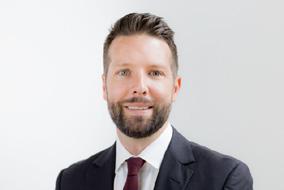
For instance, accountants or lawyers need to deal with a lot of documentation, but an AI-based tool could take on a lot of that
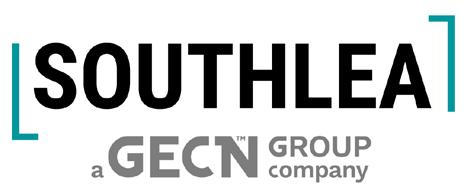

• Global reach and local insights
• Independent and collaborative
• Perspectives beyond data
• Deep financial and human capital expertise
• Diverse team with creative solutions
work, he says. In a health-care setting, staff in admissions spend a lot of time filling out paperwork, but AI can support that chore so that clinicians can have more free time for patients, he says.
“Like any technology that provides the opportunity for automation, it is going to be disruptive,” he says. “In terms of overall gain –from quality of work and increasing efficiency in jobs – it is going to really advance us.” DJ
TONY GAFFNEY will be hosting an in-person session on the governance implications of AI at the ICD National Director Conference in June.
SHIRLEY WON is a Toronto-based freelance journalist and former business and investment reporter for The Globe and Mail. She also worked as a business reporter for the Montreal Gazette, covering transportation, real estate, retail and banking.


Working with over 150 professionals in more than 15 o ces around the world, we help you make performance-enhancing and defensible compensation decisions in the best interests of your organization.Amanda Voegeli, CFA President & Managing Partner Ryan Resch, ICD.D Senior Partner
The ICD would like to congratulate the following members on their recent board appointments
Banking & Financial Services
Deepak Khandelwal, ICD.D DIRECTOR ALLIANT CREDIT UNION
Ray Williams, ICD.D DIRECTOR NATIONAL BANK FINANCIAL
Nathalie Francisci, ICD.D DIRECTOR LETKO, BROSSEAU & ASSOCIATES INC.
Maureen Moneta, ICD.D DIRECTOR ALBERTA INDIGENOUS OPPORTUNITIES CORP.
Jean Desgagne, ICD.D DIRECTOR BDO CANADA
Not-for-Profit
John Barrett, ICD.D DIRECTOR
RADIATION SAFETY INSTITUTE OF CANADA

Pam Laycock, ICD.D VICE-CHAIR GIRL GUIDES OF CANADA
Alvin Sharma DIRECTOR MARCH OF DIMES CANADA
Tracey Wallace, ICD.D DIRECTOR YMCA CANADA
Deanna Werklund, ICD.D DIRECTOR WEDO CANADA
Gillian McCormack DIRECTOR CANADIAN GLOBAL AFFAIRS INSTITUTE
Anna Shojania DIRECTOR ARTHRITIS RESEARCH CANADA
Mike Harris, ICD.D DIRECTOR AUDITING AND ASSURANCE STANDARDS BOARD
Education
Melissa Forgie, ICD.D CHAIR ASHBURY COLLEGE
Biotechnology
Bruce Rintoul, ICD.D DIRECTOR SUSGLOBAL ENERGY CORP.
Metals & Mining
Poonam Puri, ICD.D DIRECTOR SOLARIS RESOURCES INC.
Christiane Bergevin, ICD.D DIRECTOR IAMGOLD CORP.
Marilyn Spink DIRECTOR STAR DIAMOND CORP.
Greg Hall DIRECTOR FLYING NICKEL MINING CORP.
Energy & Power Natascha Kiernan, ICD.D DIRECTOR GREEN IMPACT PARTNERS
Oil & Gas Bettina Pierre-Gilles, ICD.D DIRECTOR BLACKSTEEL ENERGY INC.
Natural Resources Noordin Nanji DIRECTOR WESTERN FOREST PRODUCTS INC.
Transportation
Louise Poirier-Landry, ICD.D DIRECTOR SOCIÉTÉ FERROVIAIRE ET PORTUAIRE DE POINTE-NOIRE
Government
Joyce Bateman, ICD.D DIRECTOR LIQUOR, GAMING AND CANNABIS AUTHORITY OF MANITOBA
Chioma Ufodike, ICD.D DIRECTOR ALBERTA TEACHERS’ RETIREMENT FUND
Jay Aspin, ICD.D DIRECTOR ONTARIO HEALTH
Martin Haynes, ICD.D DIRECTOR CANADIAN INSTITUTE FOR HEALTH INFORMATION
Mina Mawani, ICD.D DIRECTOR LIQUOR CONTROL BOARD OF ONTARIO
Retail & Consumer Products
Nicolas Gaudreau, ICD.D DIRECTOR HATLEY
Mark S. Liss, ICD.D DIRECTOR GAZELLE HEALTH SOLUTIONS INC.
Professional Services
Louise Lalonde DIRECTOR CIMA+
Insurance
Christie Stephenson, ICD.D DIRECTOR CO-OPERATORS GROUP LTD.

Chapter Zero Canada’s* course, Board Oversight of Climate Change (BOCC), is the first to successfully pass a robust review process based on new global curriculum standards set out by the Climate Governance Initiative (CGI). This recognition confirms the ICD’s commitment to best-in-class director education, preparing boards to navigate the complex and ever-changing climate governance landscape.
Continue to check the ICD website for upcoming fall offerings and equip yourself with forward-thinking strategies to enhance your oversight of climate-related risks and opportunities.
APPLY ONLINE ICD.CA/BOCC
*Chapter Zero Canada, the Canadian chapter of the World Economic Forum’s Climate Governance Initiative (CGI), is the primary resource for information and education on climate governance and oversight at the Institute of Corporate Directors (ICD).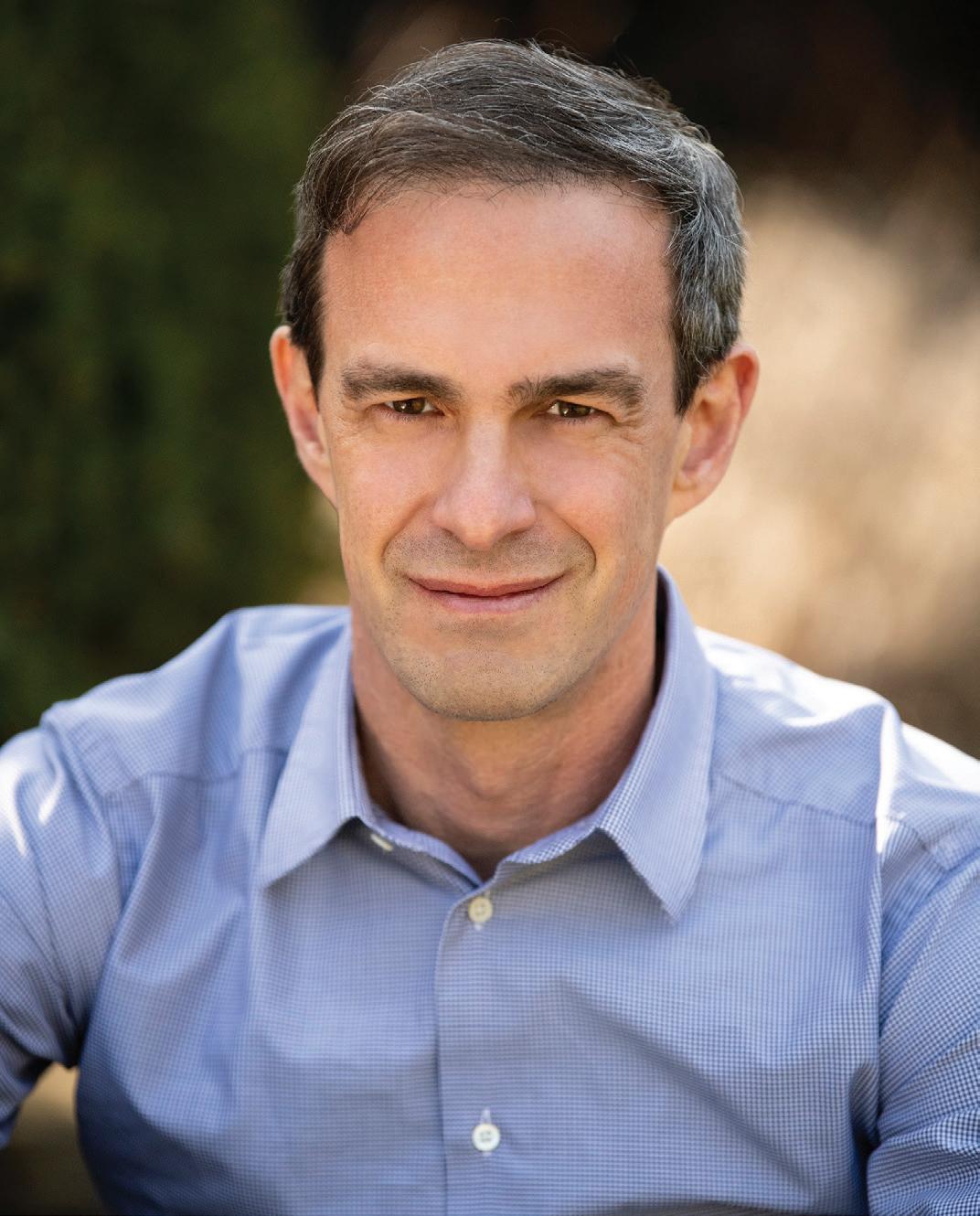
Economistand author Avi
Goldfarb says AI can potentially change who has the power to make decisions in the workplace. ‘People whose jobs are [about to be] disrupted can figure out ways to resist and slow things down.’BY Shirley Won
ARTIFICIAL INTELLIGENCE (AI) is having a moment now that ChatGPT, a headline-grabbing chatbot, has taken the world by storm. This online tool launched last November by Microsoft-backed OpenAI can respond to queries with a human-like response. Trained on Internet-text databases, it can do everything from passing law school exams to writing poems and university-level essays. Despite all the buzz, Ajay Agrawal, Joshua Gans and Avi Goldfarb, co-authors of Power and Prediction: The Disruptive Economics of Artificial Intelligence, see to-
day’s usage of ChatGPT as just the tip of the iceberg. They argue that AI’s true potential will come, not from “point solutions” or a task that AI can do more efficiently than humans, but from system-level changes to the ways that organizations make decisions.
Director Journal asked Goldfarb, chair in artificial intelligence and health care at the University of Toronto’s Rotman School of Management, about the challenges facing AI adoption, how AI can reduce bias and what risks emerge when machines can perform human-like tasks.
You and your co-authors published Prediction Machines: The Simple Economics of Artificial Intelligence in 2018. Why did you write a second book on AI?
We had expected an AI revolution to happen because we saw the potential and opportunity to make our lives at home and at work better. Today, we are talking about AI because of machine learning, or prediction technology. [It takes] information you have, to fill in information that you don’t have. Still, there has been relatively little adop-
tion by business in a way that transforms an organization. Most firms deploying AI have done what we call “point solutions.” You take out an existing process and drop in an AI to make the workflow more efficient. That’s good but tends not to deliver value. What is needed is a system solution with workflow changes to provide a new, or better, product or service to customers. The goal of the new book is to provide guidance for companies to benefit from AI.
Verafin Inc., a fraud-detection software company acquired by Nasdaq for US$2.75-billion in 2021, was Canada’s first AI unicorn. Why were you surprised?
We were focused on where cutting-edge science was happening. Toronto, Montreal and Edmonton have many of the best AI scientists in the world, so we expected the commercial opportunity to come from those places. Verafin, a St. John’s, Nfld.-based company, had fraud-detection technology [for financial institutions] that became better by incorporating AI. It’s a point-solution company because it can integrate its technology into workflows smoothly. Once we understood that the profit opportunity was so much about integration into workflows,
it was clear why Verafin took off. For many companies, that integration isn’t easy, even with access to cutting-edge AI technology.
Can you give an example of AI’s potential in terms of a system change?
It happened in the personal transportation industry. For example, it takes three years of schooling to become a professional taxi driver in London, England. It’s a year in the classroom poring over maps and two years of practicum. But with digital maps, digital dispatch and an AI that can predict where people need to be picked up, the taxi industry has become more efficient. However, those tools also provided an opportunity for companies such as Uber and Lyft to transform the transportation industry by making amateur drivers become professionals.
Two things make AI adoption difficult. To get a big impact in terms of systems solutions, you need company-wide co-ordination. You need multiple people to change their behaviour at the same time, but that is hard. Secondly, AI can also potentially change who has the power to make decisions. The AI machine provides a pre-
diction, but it’s humans who provide the judgment. In a company, you may have human resource managers who have great intuition as to who would make good employees. With prediction technology, however, that decision could also move from human resources to a group at headquarters. But people whose jobs are [about to be] disrupted can figure out ways to resist and slow things down.
Established companies may have technological challenges integrating AI in their processes. They may not have a deep technology infrastructure, or their infrastructure may have been built for a different purpose. In fact, their standard operating procedures may deal with the inability to make predictions. Some of the world’s best airports have great restaurants, shopping, and other things in them because they fail in their mission of ensuring smooth transportation. They can’t predict how long it takes passengers to get to the airport or go through security and to the gates. Still, having prediction technology to do things differently might also change who ultimately
‘THE MACHINE-TAKING-OVER-THEWORLD RISK IS NOT A SHORT-TERM CONCERN. BUT I AM GLAD THERE ARE SMART PEOPLE THINKING ABOUT THE LONGER-TERM IMPLICATIONS OF TRULY INTELLIGENT MACHINES.’
gets to make decisions and who has power. That means there can also be resistance from certain people.
ChatGPT has caused much excitement. How do you view it?
It is an incredible technology and represents a lot of opportunity in AI. But the way we imagine using ChatGPT is just the tip of the iceberg. A lot of the discussions have been around point solutions. In edu-
cation, for instance, there is anxiety about doing homework, or take-home assignments. Students can ask questions into ChatGPT and get pretty good answers. The system approach would be something like how to redesign homework to take advantage [of the idea] that writing can now occur well and at scale. What that system is going to look like, I don’t know. More importantly, the expectations of what students can deliver have also changed. There
are no more excuses for bad grammar or poorly structured essays because AI can do all of that for them.
Your book suggests that AI could reduce bias. Can you elaborate?

There is lots of evidence that, when looking at AIs deployed so far, they often give an advantage to privileged groups when offering loans to people or hiring employees. The reason is because the data on which they are trained involved human decision-making, which favoured privileged groups. But I am more optimistic that we can improve AI than humans. It is easier to detect discrimination because there is an audit trail. Once bias is identified, we can proactively change the code, the programming and data going in, to improve it.
What about risks from AI? Some people fear sci-fi scenarios where chatbots or robots escape control of humans and use AI to advance their agendas.
The machine-taking-over-the-world risk is not a short-term concern. But I am glad there are smart people thinking about the longer-term implications of truly intelligent machines. The risks to my mind are different. AI could enable power to concentrate in a few hands. People who know AI well can use it to influence decision-making on a large scale. For instance, hiring decisions in a firm might move from individual human-resource managers to a small committee or one individual who may decide what criteria to use. In terms of employment, there is also a short-term risk for people holding jobs that AI can do, such as editing, potentially translating, and maybe graphic design. Your expectation should be that your job looks very different in 10 years than it does today. Technological change typically makes society better off, but there are winners and losers. DJ
SHIRLEY WON is a Toronto-based freelance journalist and former business and investment reporter for The Globe and Mail. She also worked as a business reporter for the Montreal Gazette, covering transportation, real estate, retail and banking.
Ready to take your next holiday up a level? Above: Space Development Corp. has grand plans to build a place in space for human travellers. The company, formerly known as Orbital Assembly, is using its expertise in designing space stations to create two space hotels – the Voyager Station and Pioneer Station. With vacation villas, themed restaurants, concert venues, gyms, spas, and bars

and lounges with views of Earth, Voyager Station plans to offer a high-end stay for up to 400 guests. Pioneer Station will come with fewer bells and whistles, functioning as a blended commercial, research and tourism facility. This hotel would have room for just 28 guests. Shaped like a Ferris wheel, both hotels will use centrifugal force to create artificial gravity. For an experience that is truly out
of this world, gravity-free opportunities and traditional space food will be on offer. As the space hotels depend on private funding, there is no timeline for completion. Above: Space hasn’t publicized room rates, but otherworldly experiences don’t come cheap. Virgin Galactic, for example, has advertised a rate of US$450,000 per passenger for a 90-minute space flight.

If you are a board director or Executive Director of a registered charity whose purpose is to improve outcomes for the community the organization serves, then the ICD invites you to apply to the ICD-RBC Foundation Scholarship.
This needs-based financial assistance, will provide the opportunity to attend the ICD-Rotman NFP Governance Essentials program.
As Canada’s leading program for foundational board governance education, participation in the program will provide high-level training, expanded leadership capabilities and insights from other community minded leaders.
A limited number of scholarships* will be available in the fall. Continue to check the website for upcoming fall offerings.
Applications are considered on the basis of merit, need and factor in how governance education will benefit the registered charity. Preference is given to equity-seeking organizations that serve the underrepresented.
Apply now at ICD.CA/RBCSCHOLARSHIP
Sustainability reporting that goes beyond the expected Reporting expectations are changing—so must you. Ensure your data is ready to tell a full story.
